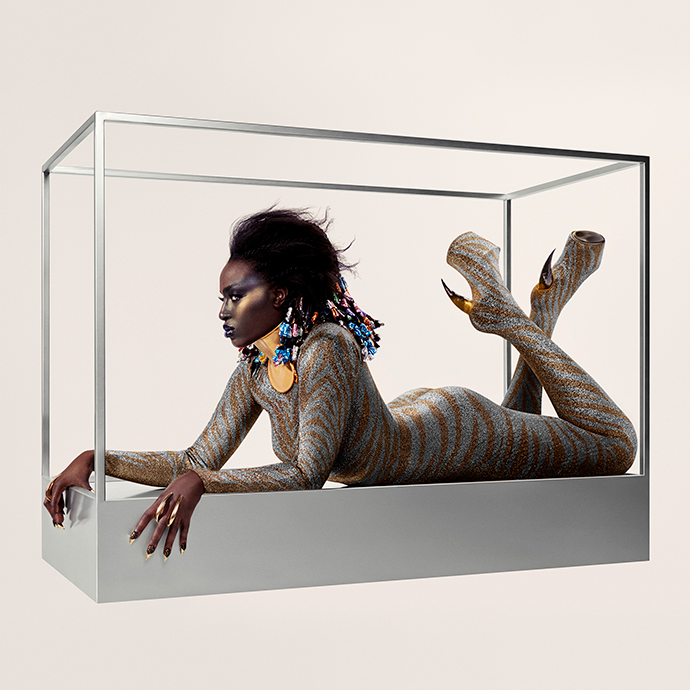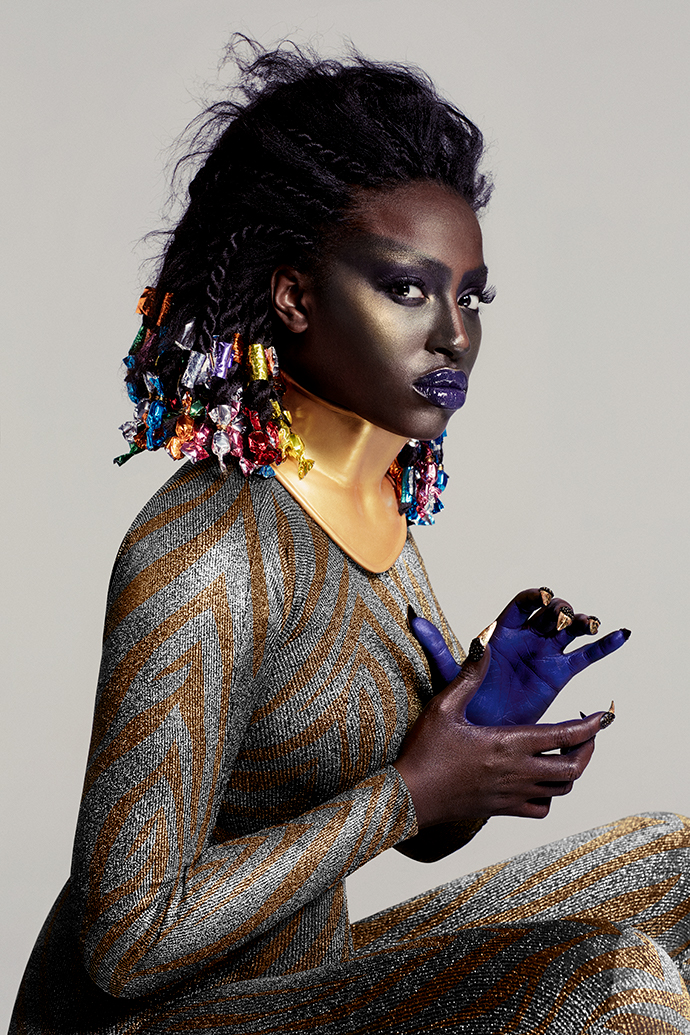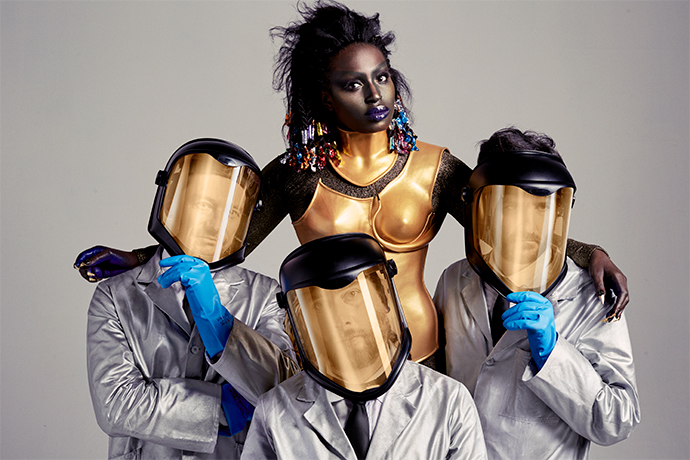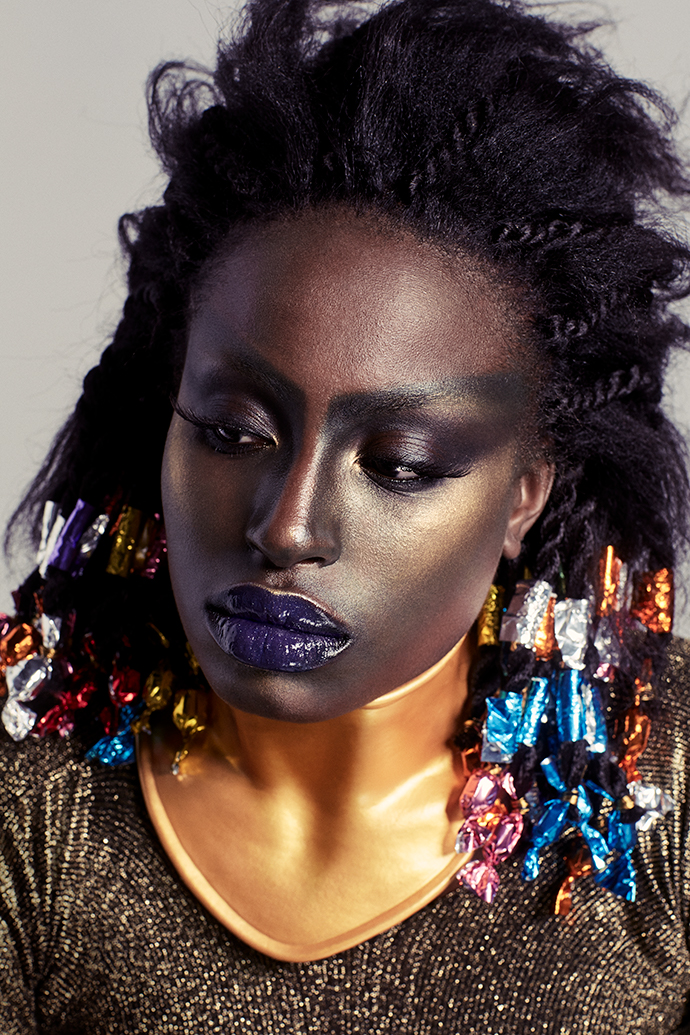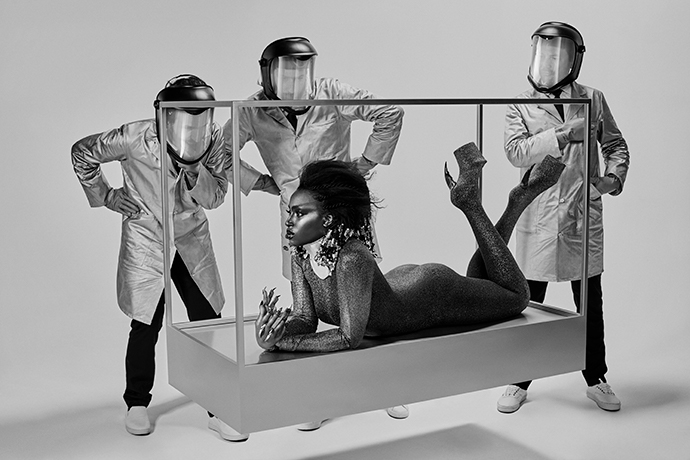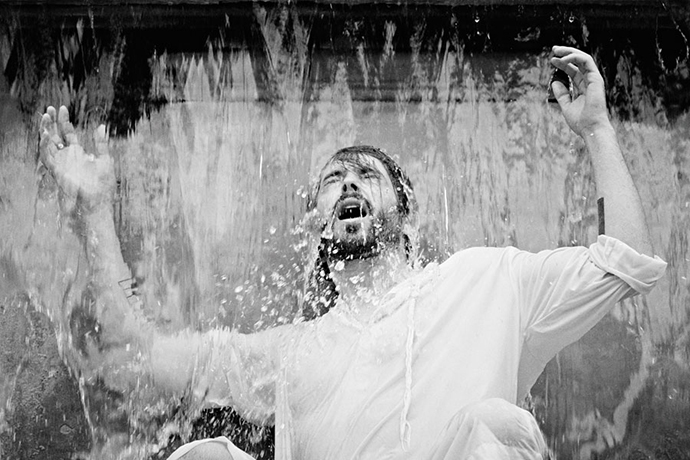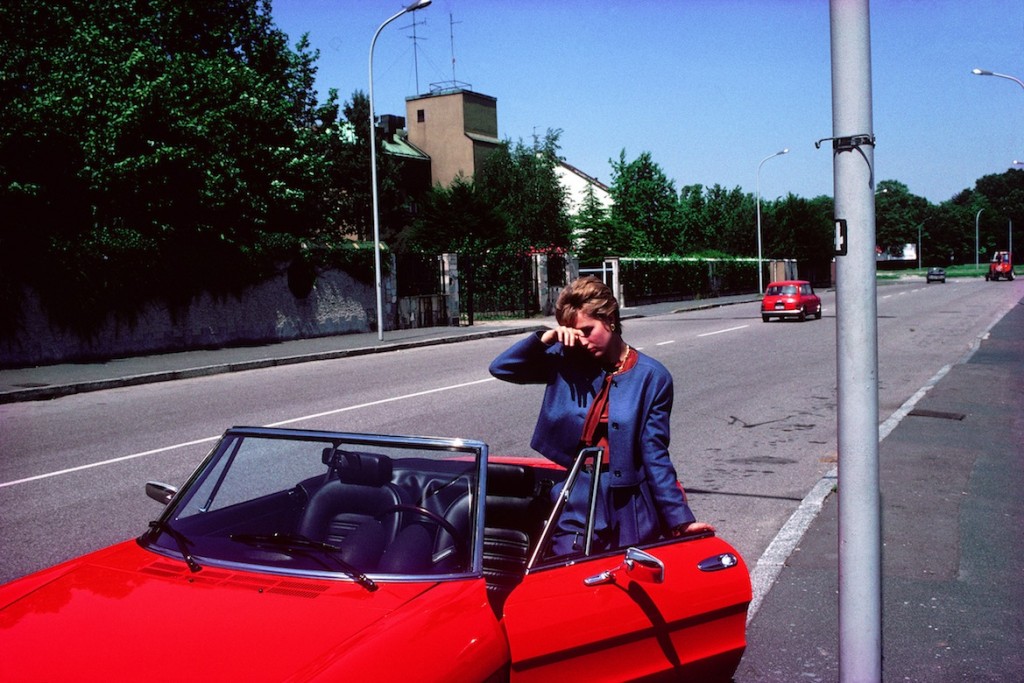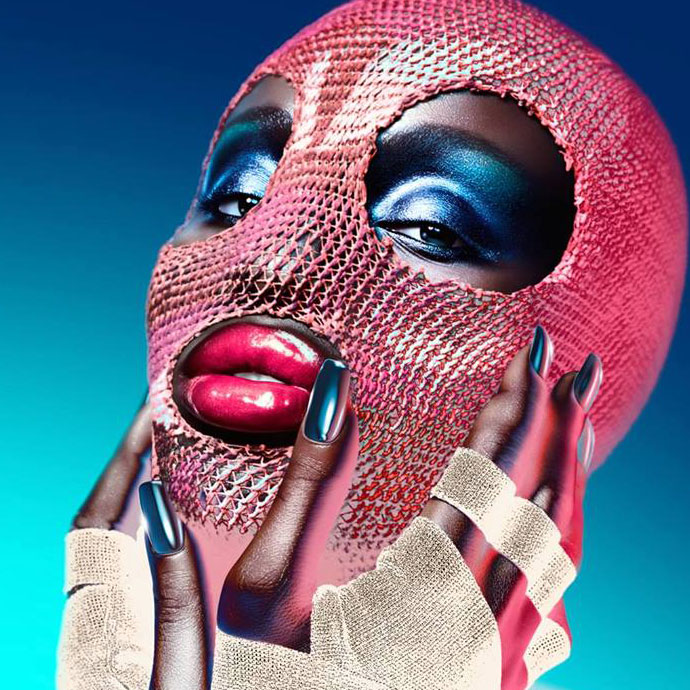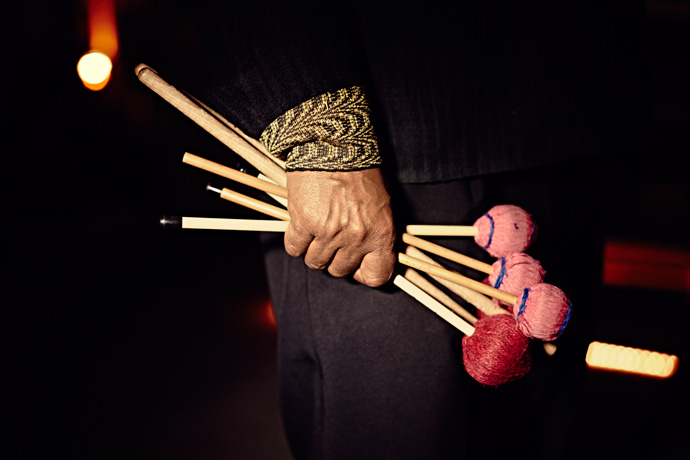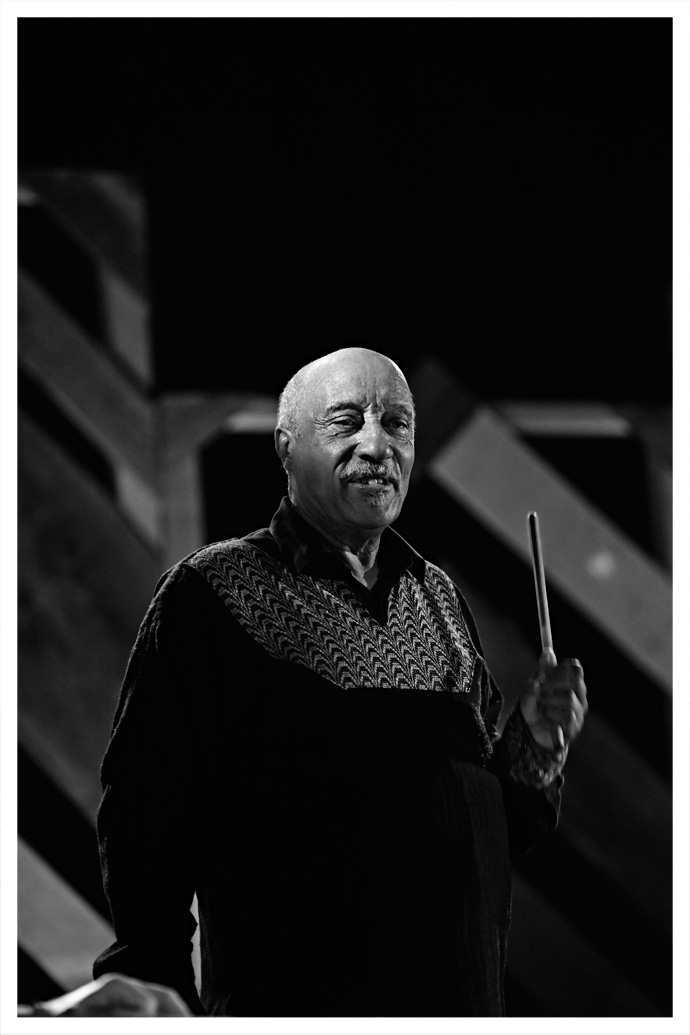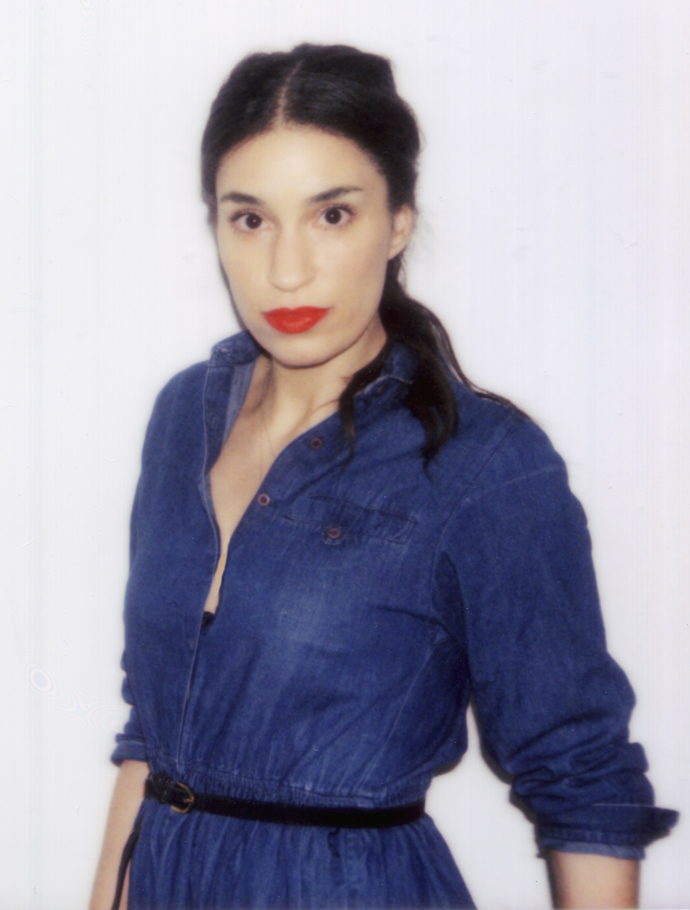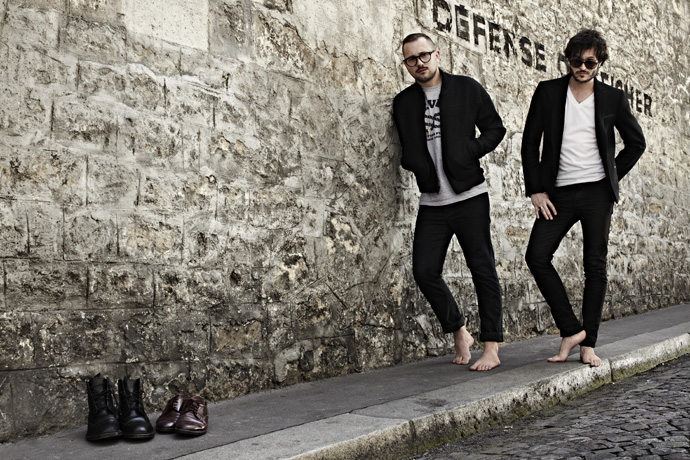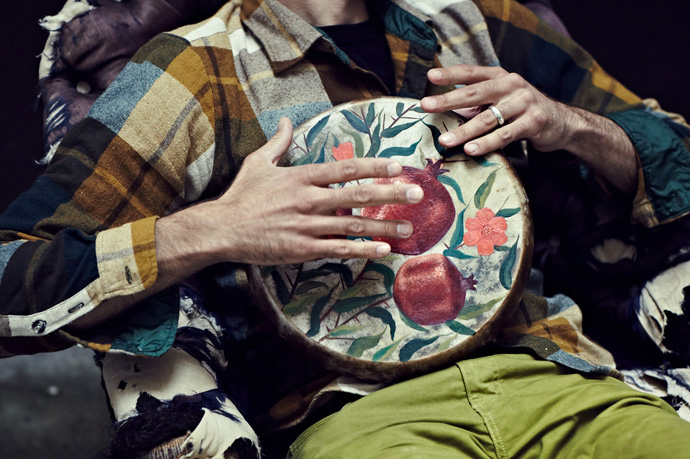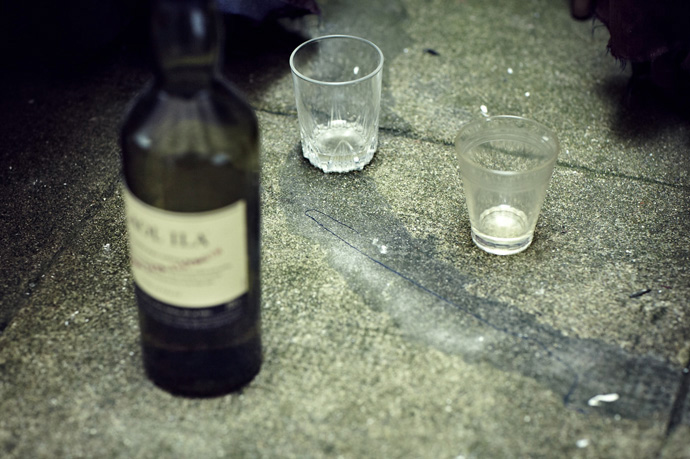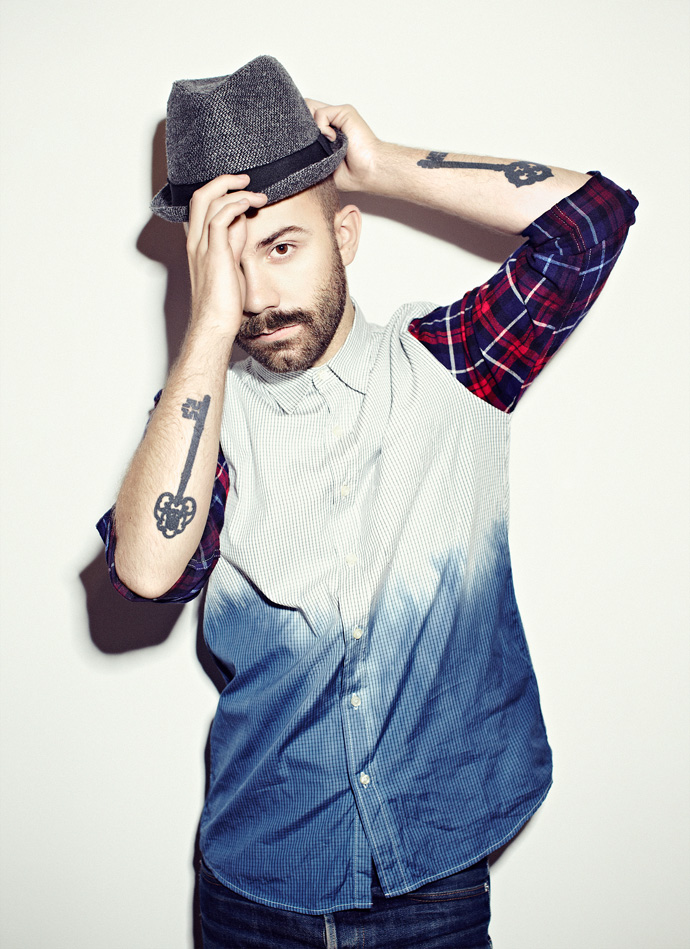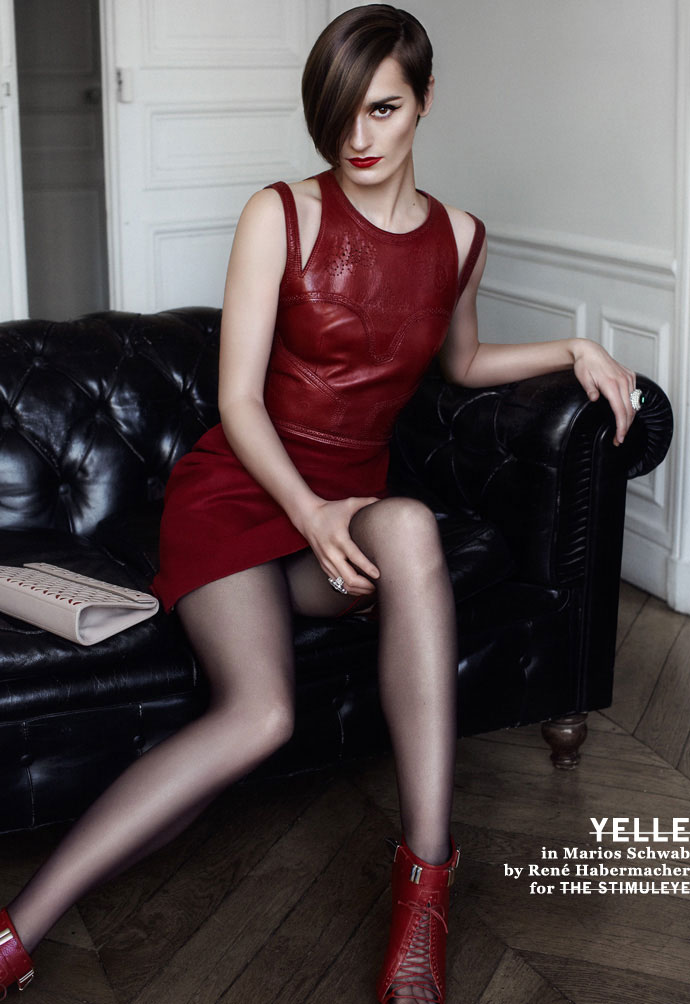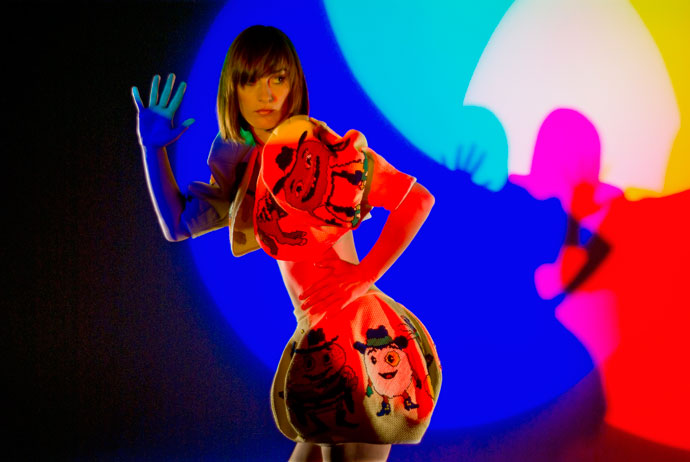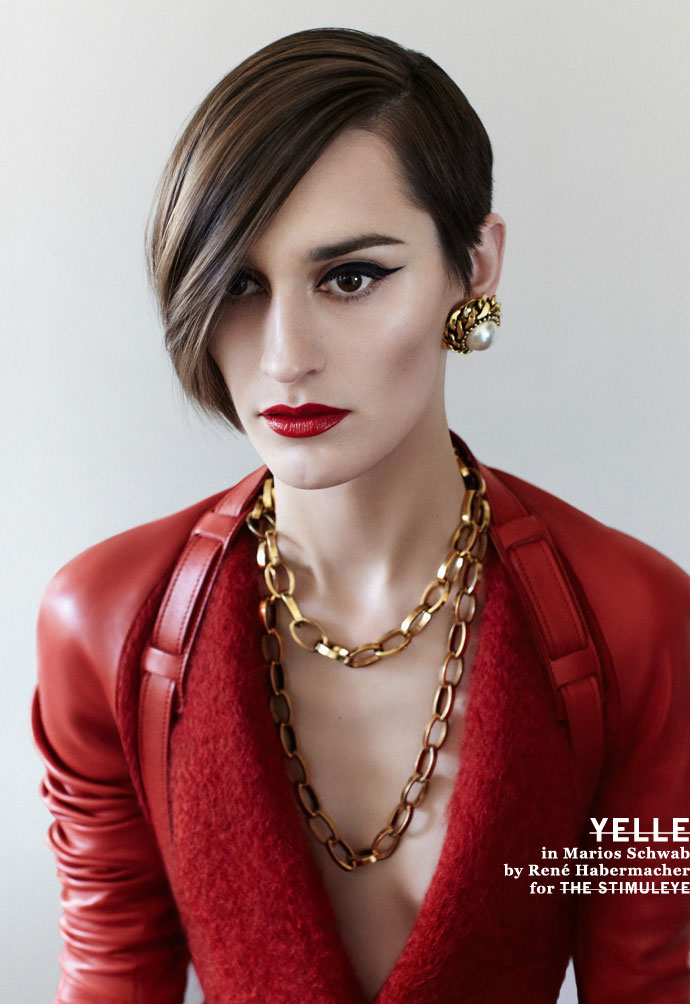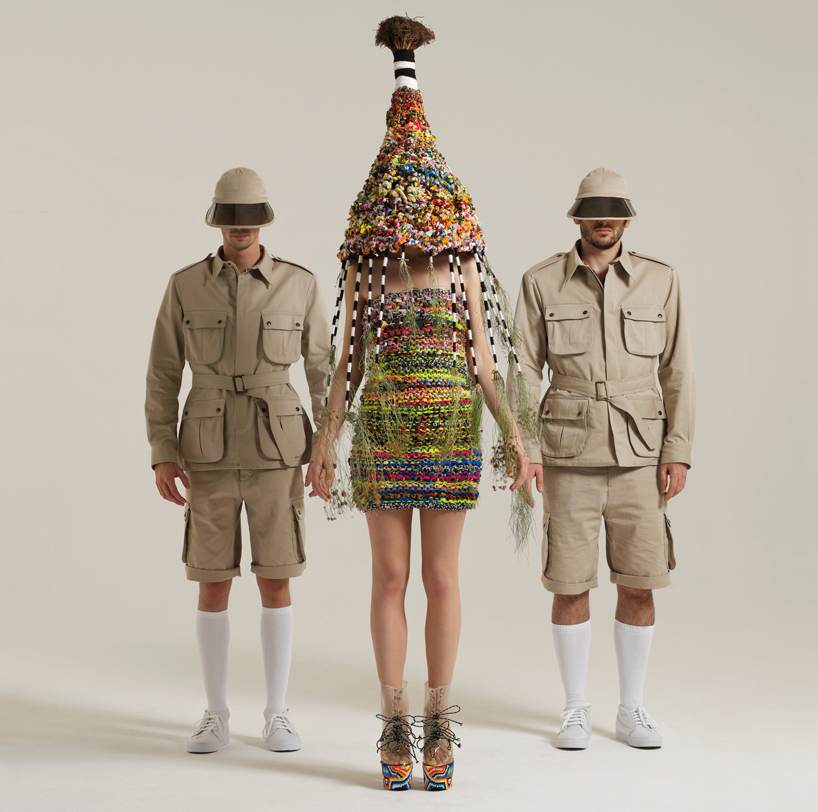-

Rocky – Soft Machines
-Label G.U.M. and The Stimuleye present
Rocky’s first album “Soft Machines”,
out October 21, 2016.Photography by René Habermacher.
Art Direction by Antoine Asseraf.ROCKY SOFT MACHINES Cover Atwork by René Habermacher.
ROCKY SOFT MACHINES Artwork by René Habermacher.
ROCKY SOFT MACHINES Artwork by René Habermacher.
ROCKY SOFT MACHINES Artwork by René Habermacher.
ROCKY SOFT MACHINES Artwork by René Habermacher.
styling: Rogelio Burgos
make-up: Min Kim @ Airport
nails: Hiro @ Jed Root
hair: Chiao Chenet @ Airport
retouching: Dimitri Rigas
production: The StimuleyePre-order CD & VINYL of “Soft Machines” from Fnac here.
Watch Rocky’s “Chase the cool” music video by The Stimuleye from their first EP here.00 -

paris is dead – bap-tepr-ism
-Welcome to your Paris baptism.
Photography by René Habermacher.
Styling by Suzanne von Aichinger, with Maison Martin Margiela.
Concept by Antoine Asseraf.Transcribed by Amandine Flament. Translated by Edward Siddons.
Assisted by Amandine Flament & Ed Siddons.read more on PARIS IS DEAD.COM
-

rocky
-The Stimuleye presents Chase The Cool, the first music video from the first of EP of Rocky.
CHASE THE COOL, written & directed by Antoine Asseraf & Rene Habermacher.
Your EP is very diverse sonically – is it because you’re still experimenting, or because you refuse to choose one style ?
Let’s say you can find in Rocky the influences we wanted to play with: House, Pop, R&B. All these musics are not so different, they all have their roots in African American music.Lille, Paris,… is it important where you’re from?
No. Today you can make the same music whether you’re from Lille, Paris or Madrid. Even though it’s true there isn’t the same energy in a big city like New York as in… Paris.Singing in French…is it taboo for you ?
Not at all. We’re thinking about it for the next EP.What’s it like playing the Olympia concert hall Jouer à l’Olympia? Inès, you mentionned you had already sung there before the Inrocks Festival…
You can say what you want, the Olympia isn’t a venue like any other. We were lucky enough to play it twice (the first time opening for The Shoes) and it was a great experience each time. The mood is peculiar, and you always get a reaction when you tell your family you’ll play there.What’s your process, from writing to production ?
There are no rules. But generally we start from a base by one of us, we push the production further and Inès tries to lay down some vocals. We go back and forth like this a few times, until we like it enough to play it to Pierre Le Ny, the Art Director of the label, who’ll put it in the trash.Sometimes, when he thinks the track is cool, he’ll send it Guillaume Brière (half of the The Shoes), who finalizes it and puts it on a record.
At least that’s how we do it now. It’s simple to tell, but in fact each step comes with its share of tears and despair.Where did the name Rocky come from?
We wanted a name that was cool, easy to remember, that would work in any language. This one was already part of the collective imagination, so the work was already done, which made it easy. We also liked the idea of highjacking an already ultra famous name from its origins. It never fails to trigger people to ask us about the name.What is the last thing which stimulated you ?
TRUE DETECTIVE !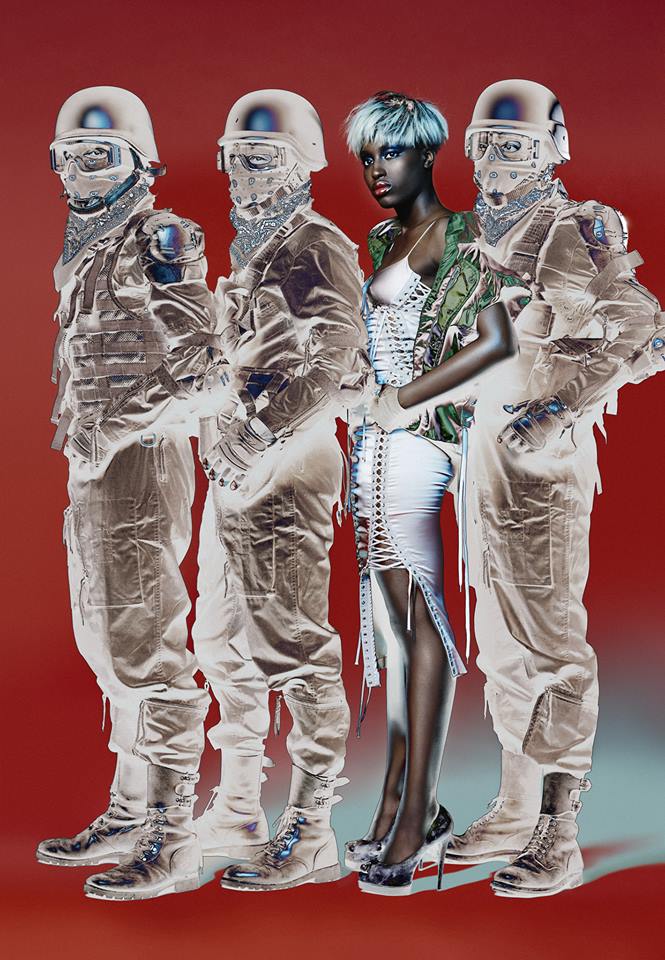 Rocky, by The Stimuleye.
Rocky, by The Stimuleye. -

#AllEyesOnHyeres: Steve Hiett, president of the photo jury
-Steve Hiett pursued a Masters Degree from the Royal College of Art Graphic Design before his Swinging London years, which saw him travelling the world as the lead guitarist of Britain’s psych/pop group The Pyramid.
But it was not until an unfortunate accident on stage deprived him temporarily of his Fender—namely, electrocution from an ungrounded microphone—that he turned back toward his roots in the visual arts, and picked up a camera. Initially documenting his own group while on tour, he was soon photographing the international rock scene at large.
Steve Hiett, by The Stimuleye.
Over the past four decades, Hiett has pioneered a signature style that has become instrumental to the global world of fashion photography. Favoringover-saturated images, off-centre framing, unconventional compositions, and dazzling flash work, his work has been featured regularly in renowned magazines worldwide—from Nova and Queen to British Vogue, Vogue Paris, Elle, and Marie Claire.
The Hyères festival 2014 will present the first major exhibition of Hiett’s oeuvre, emphasizing the unsung aspects of his images and re-establishing him as a figurehead in the history of contemporary photography.
Steve Hiett lives in Paris, where he continues to work as a photographer for renowned fashion publications (notably for Vogue Italy), as well as a musician, graphic designer, and art director.
What was the process behind selecting the images for your exhibition at Hyeres? What will the visitors see?
Steve Hiett: Raphaëlle Stopin came to my place and looked through everything I could find. She selected the images.
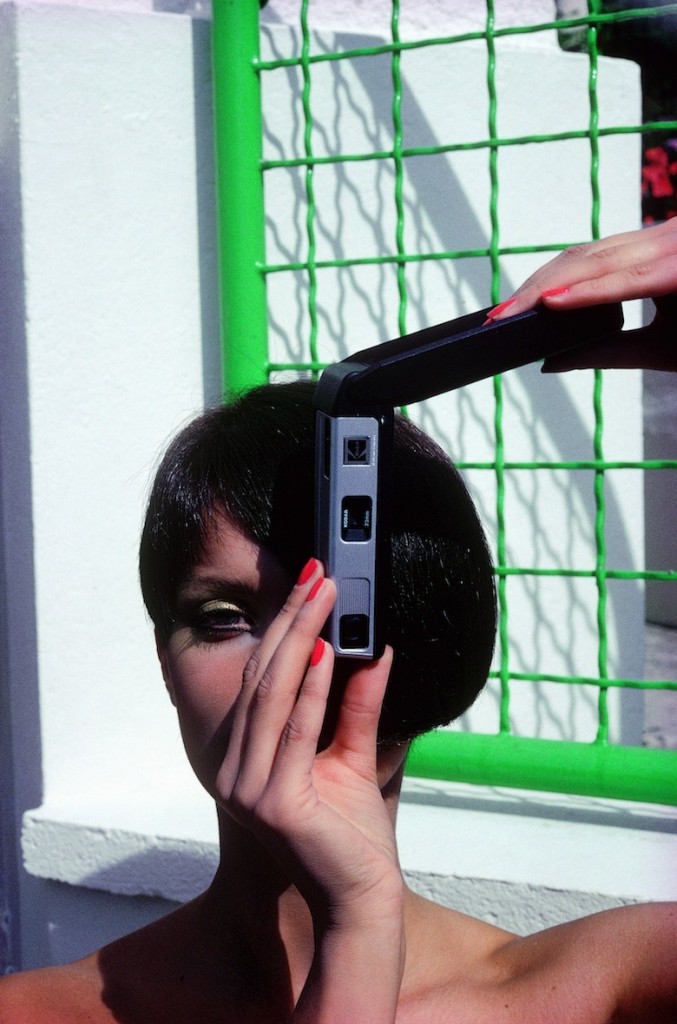
Steve Hiett, Vogue, 1979.
You didn’t plan to become a photographer, and it seems that your early photography was informed by your circumstances while you were on tour. Considering how digital and technological developments throughout media have changed the landscape of photography, what kind of career path do you think you would find yourself upon if you were only beginning your career in the present day? How would a young Steve Hiett go about his business in 2014?
SH: Starting today? I have no idea. Fashion photography is such a complex thing now; lots of politics and all the digital processes, which makes doing a photo so long and complicated. When I started, you just walked into a magazine and the art director would give you a job. I don’t think you can do that now. Also, to take a photo, you took a light reading, pressed the button and that was it; what you got back from the lab was it—end of story. Now you are dealing with all sorts of choices and the new world of retouching, which can go on for days. I worked for 30 years and never retouched anything. It never entered my head (or any other fashion photographer) as even a possibility.
Steve Hiett, 1979.
Looking back over your career as fashion photographer, is there a certain period in time that stands out for you in particular?
SH:Starting. I knew nothing, but it didn’t matter.
Having worked through the last few decades of fashion photography, what kinds of major aesthetic shifts have you noticed?
SH: Now the boss is the fashion editor. They decide who works and who doesn’t, but before it was the art director.
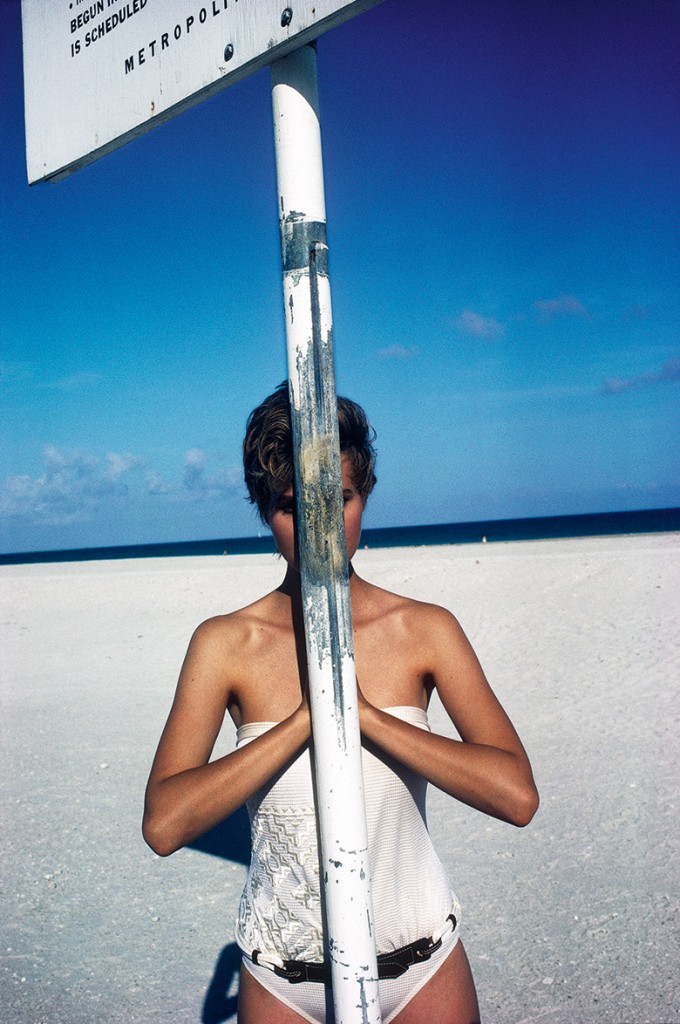
Steve Hiett, 1979.
There is always some sort of tension in your photography. How do you achieve it?
SH: Tension in my pictures? That must be subconscious: I never look for tension. I look for the right feeling.
What is the last thing that stimulated you?
SH:The last thing that stimulated me? Steve Cropper’s guitar solo on “Green Onions,” which I have listened to 1000 times. I listened to it again last night; still has that magic. OK, I know the notes he plays, but it goes way beyond that—it’s a magic thing.
NOTE: Interview questions were put together by this year’s Hyères Festival Blog Partners:
Malibongwe Tyilo, Filep Motwary, Branko Popovic, The Stimuleye, Sean Santiago, The Kinsky. -

rocky
- -

Merry Xmas, Mister Sakamoto.
-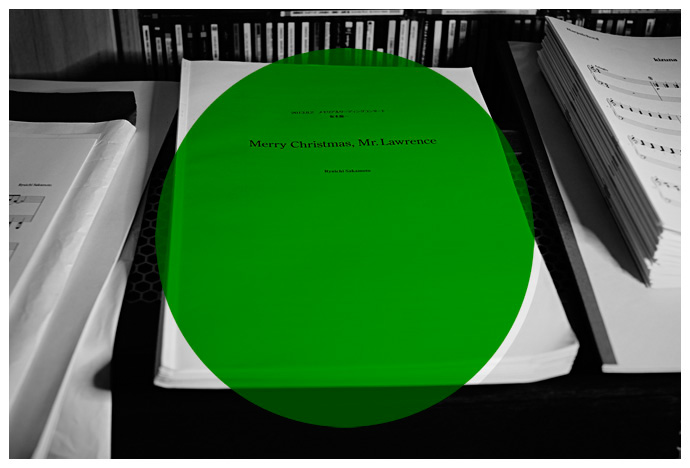 Manuscript to the score of "Furyo" by Ryuichi Sakamoto. Photography René Habermacher.
Manuscript to the score of "Furyo" by Ryuichi Sakamoto. Photography René Habermacher.It doesn’t quite add up.
There are the many facets of Ryuichi Sakamoto, but putting them together, you still wouldn’t get a sense of who the man is.
He is both an icon of Japan’s 1980’s Bubble Era, and the one who moved beyond Japan and away from the spotlight, a consistent experimentalist and accidental sex-symbol.
Founding member of the influential band Yellow Magic Orchestra, Japan’s answer to Kraftwerk.
Musical innovator for over 30 years, mixing synthpop, Okinawan traditions, sampling, bossa nova….
Screen-mate of David Bowie in the cult film “Merry Christmas, Mr. Lawrence” / “Furyo.”
Film composer for Almodovar, Oshima, Bertolucci, Oliver Stone and Brian de Palma.
Collaborating with David Byrne, Brian Wilson, Youssou N’Dour and the Dalai Lama.
Appearing in Madonna’s “Rain” music video.
Sampled by Afrika Bambaataa…and Mariah Carey.And last but not least, well before the Fukushima accident, a prominent activist in Japan’s anti-nuclear effort.
It doesn’t quite add up, and that’s really for the best, as we found out after spending an afternoon with him in New York City
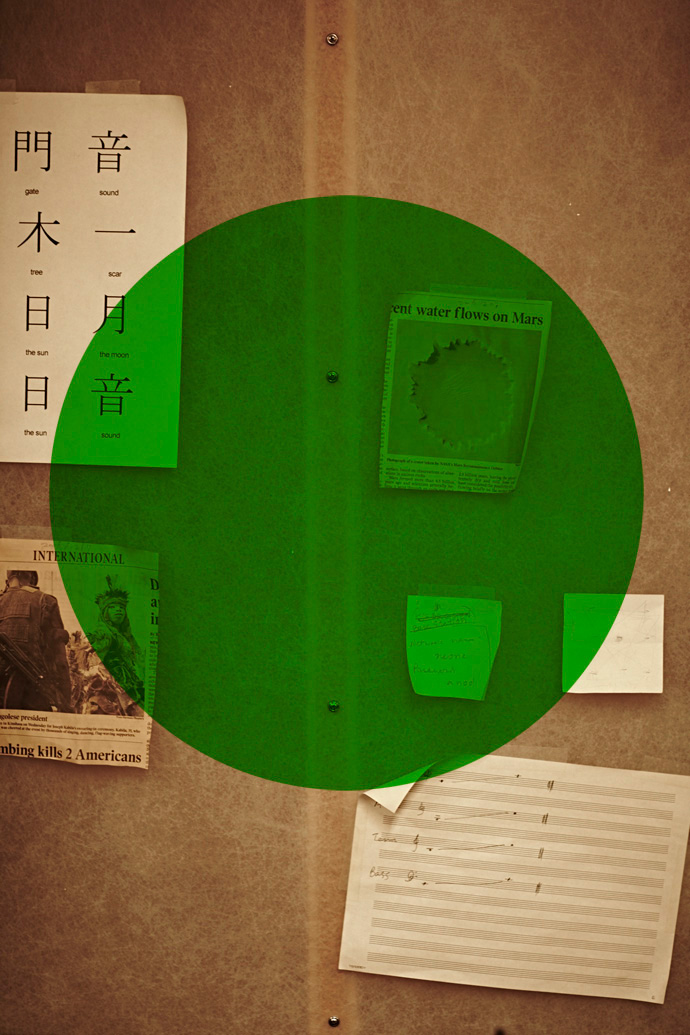
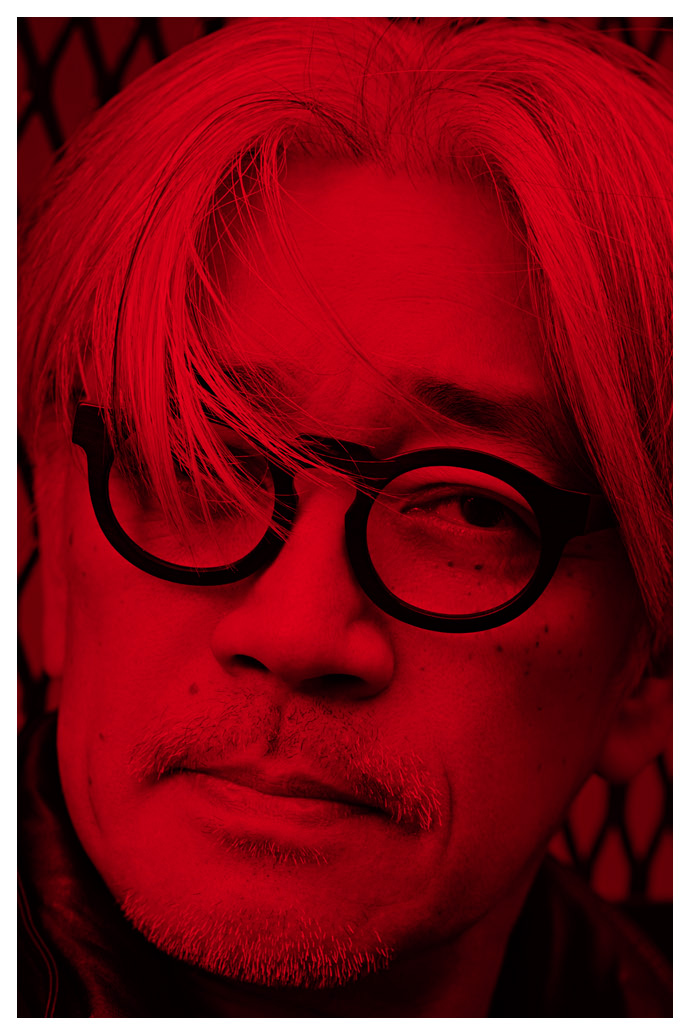 Left: inspiration board. Right: Ryuichi Sakamoto. Photography by René Habermacher.
Left: inspiration board. Right: Ryuichi Sakamoto. Photography by René Habermacher.The Stimuleye: When did you first feel personally concerned with the nuclear issue?
Ryuchi Sakamoto: Probably I started feeling anxious about it around the time of Chernobyl. Then I encountered the facts about the nuclear reprocessing plant in the northern part of Japan called Rokkasho. It was 7 years ago, pretty recent.
It’s not a usual nuclear plant, it’s to re-use, re-process used radioactive wastes. Through the processing, you emit hundreds of time more radioactive materials than the usual nuclear plant does. You get 365 nuclear plants in 1 village. Very dangerous.
So I started a web campaign, called Stop Rokkasho, I asked Kraftwerk to give us a sound logo, and they did actually ! The pretty famous graphic designer Jonathan Barnbrook had his assistant design the webpage, which was very neat.
As a web campaign it succeeded, my friends – photographers, musicians, stylists, creative people got to know about this plant. We decided to make a Stop Rokkasho tshirt, we asked more than 50 designers to make a tshirt. They needed phrases, so I gave them “No Nukes. More Trees.”
Everybody loved it, especially the second line.
It’s very easy to understand, and no one can resist.So, I decided to form a company called “More Trees”, it’s been 6 years, and we’ve been doing mainly conservation of Japanese forests. We have now 11 forests in Japan and 1 in Philippines.
(more…) -

MULATU ASTATKE: the bushes vs Debussy
-It may have taken decades, but the Ethio-Jazz sounds of Mulatu Astatke are now traveling throughout the world, through Kanye West samples and Jim Jarmusch films, reaching unlikely destinations such as the ecstatic crowds of Calvi On The Rocks in Corsica.
‘Doctor’ Mulatu Astatke as he likes to remind us, is not only a jazzman, but a doctor in musicology, who is eager to add to the lists of achievements of his home country, Ethiopia: coffee, inspiration to the Rastafarian faith, the invention of the musical scale, and it would seem, music conducting.
The bushes. Debussy. In the the mouth of Mulatu Astatke, it’s hard to hear the difference between the two.
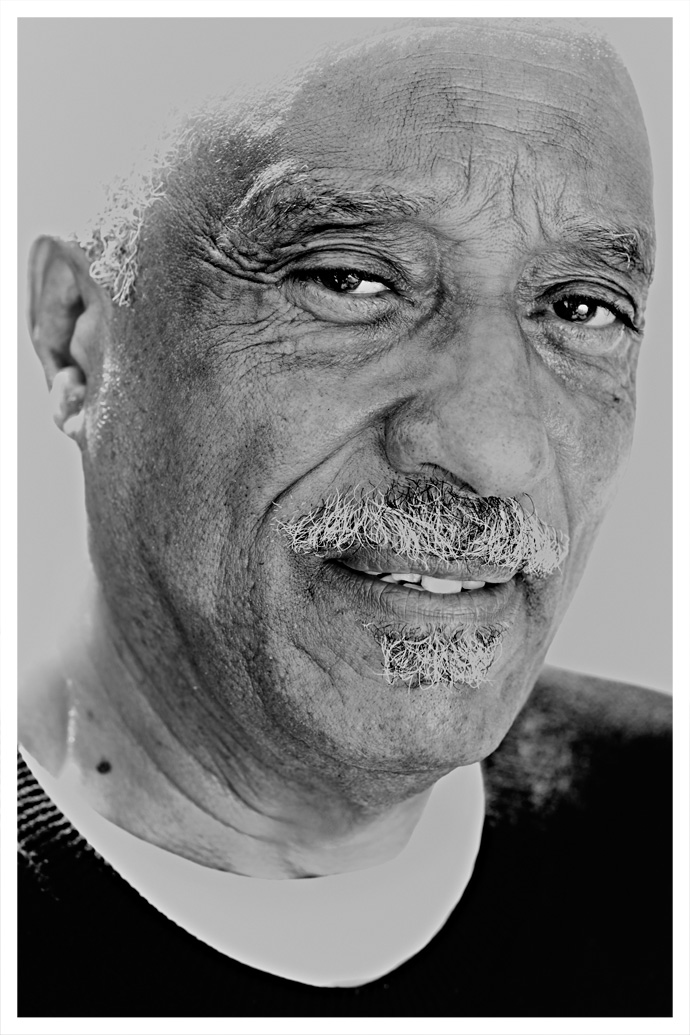
Doctor Mulatu Astatke, "Father of Ethio-Jazz" as his business Card states. Calvi 2013. Photography by René Habermacher.
René Habermacher: How did you come to be part of this festival that is very electronic music related?
Mulatu Astatke: Well, you know, I’ve travelled to Europe a lot in the last 3-4 years. The band became very popular, very busy and we did also a completely beautiful cd which will be coming out in October for the Jazz Village. People seem to ask for my band everywhere.
I used to be involved with electronic music a few years back with Heliocentrics on the album “Inspiration Information” (2009). But I really love acoustic sounds very much: real sounds, real music, everything. It’s good for the people to be able to get both sides, they can hear the acoustic but also the electronic music. I think it’s a very good idea to bring me to this type of festival. It’s great.
RH: How do you feel about the younger generation of pop musicians referring to your sound or even sampling, as in the case of Kanye West and other heavyweights of the contemporary pop generation?
MA: I remember the film “The Broken Flowers” by Jim Jarmusch, with Sharon Stone and Bill Murray. (NB- The soundtrack to the film features an eclectic mix of music, chiefly using instrumentals by Mulatu Astatke as the main score mixed with garage rock, metal and reggae.) The film really made a push and brought different crowds to my audience.
Then people started sampling my music. So my audience keeps on growing. I love it, I have no objection to sampling my music, because every time they sample, the crowds come too.I see all kind of people in London, in Paris, in Australia, everywhere, middle-aged, young, old ages, all kinds of crowd. It helps Ethio-jazz, and also for people to see different directions of music. So it helps so much. I enjoy it. Its beautiful.
Mulatu with drum sticks shortly before going on stage. The composer’s own signature instrument is the vibraphone, a set of graduated aluminum percussion bars that resemble a marimba or a xylophone. Photography by René Habermacher
RH: Ethiopian culture pioneered a lot of different things in music. Your work is part of that tradition.
Do you think because you were so pioneering it took quite some time for the deserved recognition to come in?MA: I put myself as an example and always say: never give up, just keep on pushing!
It’s so great when reality reaches what I always dreamed for this music to reach. If you just get to this point… it took me around 43 years!
The thing which takes time always give great results. It is what it is: as a musician you come to Paris, play Ethio-jazz, you go to NYC, to Germany, Denmark, Sweden, England: playing Ethio jazz.
And then suddenly this music just develops. Its a great recognition.I got my PhD from Berklee (NB – Boston, USA) and lectured in different universities all the time. It’s a great achievement for Ethio-jazz to be accepted at Berklee, a recognition of what we have given to the development of modern music, to dance and everything to the world. So I said: it’s not only for Mulatu, but this is a recognition of Africa, which is so great. So this is what we fight for.
Now I also do a lot of research at Harvard, at MIT and also lecturing for National Geography last month at the Royal Albert hall in London about Ethiopian contribution to culture and music.
I talk about African achievements and what it has given to the worldRH: So the theoretical reflection is very important for you.
MA: Very much! If you don’t know the historical aspect and the contribution of your country’s music, you can’t go any further.
The more you know, the more you do research, the more you enjoy.And the more you can develop the music and show to the world your own contribution.
So research is very important. For example in Ethiopia I go to the rural areas, to the bushes.
There’s one tribe, the Dirashe, who plays a diminishing scale in the middle of a pentatonic five tone scale country like Ethiopia.
In Ethiopia we play only five notes, that’s how Ethio-jazz developed: five notes against the twelve tone scale of American Jazz, you know what I mean. When I studied at Berklee, they were teaching us how Charlie Parker created the modern jazz through diminished scale. But this tribe plays a diminished scale. And great composers like Debussy are on a diminished scale. So what is really very interesting is these tribes have been there for centuries and centuries, so what I want to know is: is it Charlie Parker, was it Debussy, or this tribe ?Who was first? This is the question. These tribes people knew nothing, no painting, nothing, and they play diminished scale. I don’t know how they got it, because they are in the middle of a five note country. How did they manage to get this?
So I raised this question at Berklee and they were so surprised. What they said is: “Oh Mulatu- you got us!”
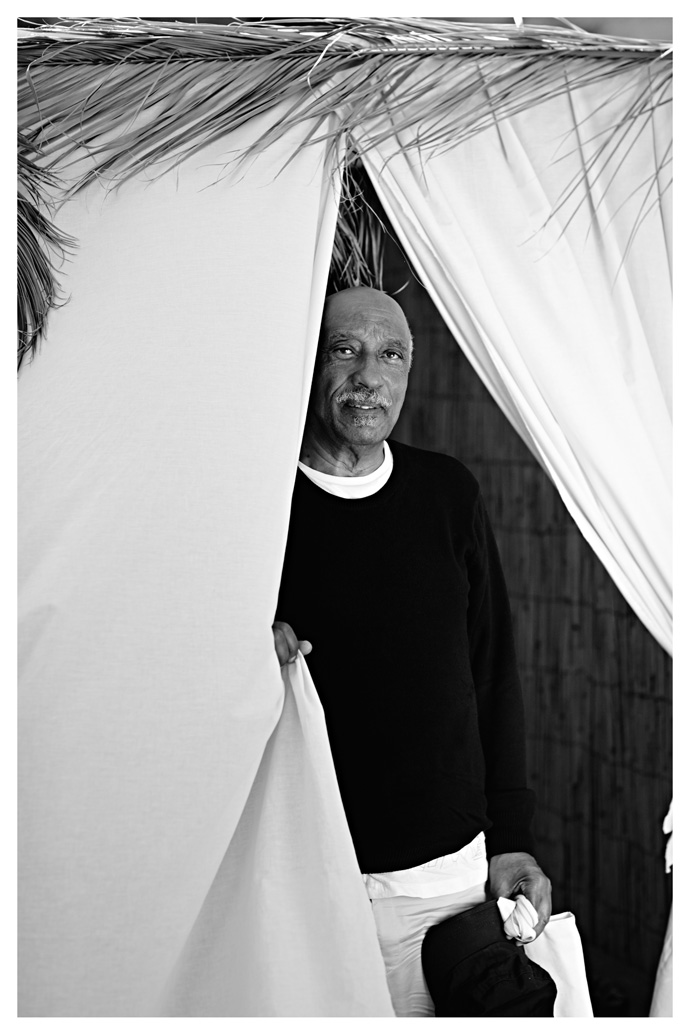 Mulatu Astatke received late recognition: Originally supposed to become an aeronautical engineer he was
the first African student in the late 1950s at Berklee College of Music — “the only place in that time,”
he said, to study jazz. Photography by René Habermacher.
Mulatu Astatke received late recognition: Originally supposed to become an aeronautical engineer he was
the first African student in the late 1950s at Berklee College of Music — “the only place in that time,”
he said, to study jazz. Photography by René Habermacher.RH: Is there a point where you thought the recognition is starting to come?
where you though somebody starts to understand what you were trying to do with Ethio-jazz?MA: In Europe and America, they understand and love my composition all the same. But when I went back from NY to Ethiopia, they didn’t like it at all, because they were used to this musical form that we call the current form: malalala…dalala (sings) I remember a long time ago there was a town that told me to get off stage. It was too complicated to them. They could not understand: “is this a joke or what is it?” Playing around: wabadawadawa?” – they don’t dig it. So I finished the piece and went off.
But now, after 10-15, 20 years they go crazy. The whole town of Addis is Ethio-jazz now.
Finally it’s Ethiopians! So I always say: keep on fighting, never stop. That’s the result.RH: When you worked with those tribes on interpretations, did they have any rejection?
MA: No. You know, I don’t touch them. I just work behind whatever is going on. I can write beautiful counterpoints and harmonies and they do their thing. I just tell them how good they are. What they’ve done to modern music, their contribution to the world. So they love it.
I do a lot of experimental work with this people. I do beautiful jazz fusions with them.
(NB- Mulatu once brought musicians from four different tribes together in an Addis Ababa television studio and orchestrated a cross-tribal fusion performance. This giving traditional musicians, many of them farmers, an artistic exposure beyond their tribes)
The ideal way to explore multiple forms of music is through jazz.
In fact there is a Dirashe track is on my new album, and another one with the Surma tribe.
It’s so interesting, I did an experiment with Fatou (NB- Fatoumata Diawara), the Malian singer who is featured in one song,
a fusion of their music with Ethiopian: east meet west. It’s so beautiful, its on my new album called “Sketches of Ethiopia”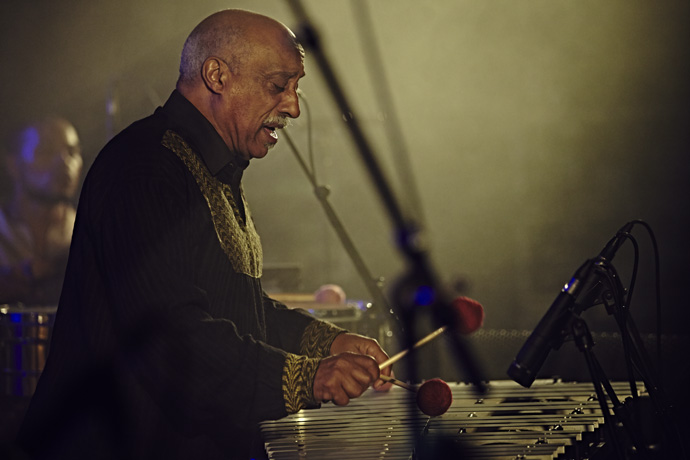
Mulatu in action at Calvi On The Rocks, Corsica 2013. Photography by René Habermacher
RH: Another culture that strongly relates to Ethiopian heritage is the reggae culture, yet in a very different way.
How is your relationship to this?MA: I really respect them for introducing the Ethiopian, the flags and their love to Ethiopia.
But even though musically we’re in different modes, different scales, different things. When you hear Bob (Marley) and the other ones they use mostly their own stuff.
So actually its not like Ethiopian culture or Ethiopian music, but this is their own way of appreciating music. I like them for promoting our country, for promoting our flag in this world, and for it to become like part of national art. We enjoy them, we love them so much! And now, you see they are adding a lot of Ethiopian modes, Ethiopian scales to reggae currently. There are rastas living in Ethiopia in a place called Shashamane.
Hailee Selassie gave them the land in 1948, so they stay there. And now they start to come into our music: Ethio reggae you know.
But now there are more young Ethiopian musicians, they do a lot of reggae. It’s great I think.RH: In 2008 you premiered a portion of the Saint Yared opera at Harvard.
Are you continuing on that project?(NB- The Saint Yared Opera is a project on Saint Yared who is regarded as a saint of the Ethiopian Orthodox Church and credited founder of the Ethiopian Coptic Church Music. He is believed to have been the first to write musical notes, centuries ahead of Western civilisation, and use an ancient form of conducting stick. The composition of the opera will blend the old and the new, and incorporate traditional chant texts in Ge’ez, the Ethiopian liturgical language, but as well electronic elements)
MA: Oh yeah. Thats very interesting. It’s gona be completed very soon. It’s already done actually.
The problem is that l am so busy travelling with other projects: I write for films, I do my experimental works.
I need two to three months to finally put the opera on a stage.This is a work I’ve done at Harvard.
My paper was about conducting being an Ethiopian contribution to the world.
We used to conduct music in the 6th century, with a stick called a mekwamia.Mulatu at Calvi On The Rocks, Corsica 2013. Photography by René Habermacher
So I studied the movement. If you look at the military band march, and the man in front waving sticks and things — 80-90% of that movement is from the mekwamia in Ethiopia.
But where did they get this from? This was before existence of symphony or conducting a symphony — and we have it. If you look inside the Encyclopedia, were there symphony orchestrae in the 6th century? There weren’t.So I said “OK, there were no symphonies, so then the conducting movement is taken from us.” Of course there were a lot of conducting, there were choirs in Europe of all kind.
But the most of the movement is what they use for the military also. If you use in the symphony a stick like this, the way you move it is exactly the same how we move it.
So they are telling us “you can do your reggae, you can do your jazz, you can do your rap.”
But they say classic music is purely European culture, which Africa has nothing to do with.
They are musicologists for Harvard, Yale, Princeton – so I said:
“look, I am open minded. This is what I found. If i am wrong, tell me, I am learning from you.”They couldn’t answer me.
So I say: “one for Ethiopia”. They said: “we’ll see.”[In the opera] there are two great conductors in the symphony, one european with a bow tie, conducting the symphony behind, and a church guy that conducts the choirs.
My dream is to do it in Lalibela (NB- one of Ethiopia’s holiest cities, famous for its monolithic rock-cut churches), the cave.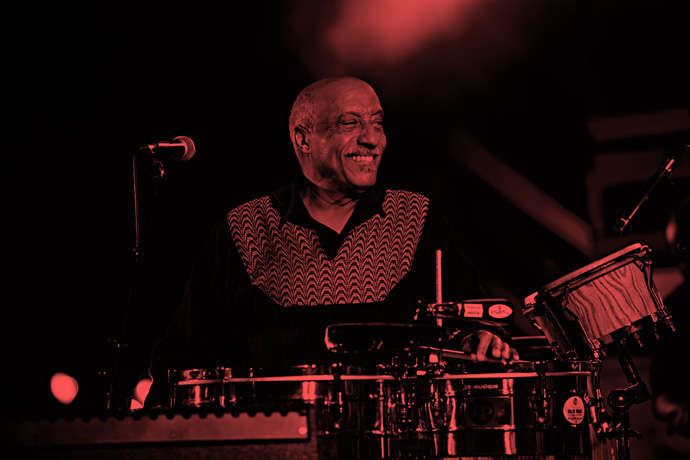
Mulatu at Calvi On The Rocks, Corsica 2013. In the late 1960s he had returned to Ethiopia with the first Hammond Organ and Vibraphones. Photography by René Habermacher
RH: What is the last thing that stimulated you?
MA: That’s really these people in the bushes. They inspire me so much. I have very great respect for them. The more you go closer to them the more you find them so interesting. They have created so many great musical instruments.
Now there are instruments in the bushes they sound like trumpets but made from bamboo. Strings, sound like violins, cellos, that kind of thing.
So I was wondering, let’s do a research – who inspired who ?
When you see these people never had a chance to go anywhere, they have no television, they have no radio, – they have nothing.So I always think they inspire the developing world. Those are the people that inspire me. The more you go everyday, you learn something.
New ideas, something interesting from those people. They inspire me.We call them backwards. But they’re not backwards people to me, they are advanced people.
They are ahead. So this this is my life now. I listen to them.
Whenever I have the chance I am in the bushes, I go close to them.
It’s so interesting, so beautiful. That is what inspires me truly.
Upcoming concert dates:
AUGUST 10 – Paris, Trianon -

fall encounters
-Another season’s collaboration with Joyce: Marios Schwab + music designer Rafael Wallon-Brownstone, and a glimpse into the world of Giambatista Valli…
Marios & the Music
Giambatista Valli
More on Joyce.com’s Special Features…
-

power couple : esser & elisha : 2 : elisha smith-leverock
-Powerdreamcouple part 2. Director Elisha Smith-Leverock has been going back and forth between fashion and music.
Her fashion films collaborations with designer Fred Butler, scored by Benjamin Esser, have been both acclaimed and rewarded.
She made the first music video for Esser before directing for Cocknbullkid, Pixie Lott, Sunday Girl and now… Esser.
Interview by Filep Motwary & Antoine Asseraf.
Elisha Smith-Leverock.
Your new video for Esser is very strong, and seems to show more confidence, perhaps because of the success of “I Want Muscle” ? I would like to hear your thoughts on “I Want Muscle”, how the story was perceived and how difficult or easy it was working for the film.
I think the Esser video and I Want Muscle might seem more confident because they are both very personal projects.
Making ‘I Want Muscle’ was a great experience. I set out to explore what physical strength can mean for women and I also wanted to challenge and expand peoples ideas of female beauty.
Obviously there were some difficulties, especially trying to find clothes for Kizzy to wear. Some designers just flat out did not want their clothes to be seen on a bodybuilder and others were willing to lend but sample sizes are generally tailored to fit a very specific kind of figure, so they did not fit her.
The reactions to the finished film were overwhelmingly positive, from winning the ASVOFF Grand Prix, down to the number of people that watched to film and how they reacted to it.A lot of people have said to me that they had never seen a female body builder portrayed in this way, without the fake tan and irony. But there was a time when people were more appreciating of ‘strong’ women and different body types, just think of Lisa Lyon for example.
I WANT MUSCLE by Elisha Smith-Leverock.
You made, if I’m not mistaken, the first music video for Esser, as well as the one for his hit “Headlock” – how is it working with someone you know intimately, to be simultaneously in tune with his world and able to step back to connect it to a bigger picture?
It’s the best and the worst thing at the same time. It’s amazing because you have great mutual trust and it’s really easy to communicate and yet it’s the scariest thing because you feel so much more pressure. You don’t want to let the other person down when they have done something so great and have worked so hard for it. You don’t want to let them down by not getting your end right.
When I shot Ben’s first video and successively the video for Headlock the approach was somewhat naive. These were also amongst my first experiments with moving image and it was really fun because Ben was just finding his feet as a solo artist so we both didn’t feel any pressure going into it.
The process for his new video was more conceptual which very much mirrors Ben’s approach to making the track.What are your inspirational catalysts and how they help you form what you do today?
Most recently I’ve ben watching a lot of Hans Richter films, this has been a great influence for the ‘Enmity’ video.
Esser: Enmity on Nowness.com by Elisha Smith-Leverock.
How do you approach making music videos versus fashion films ?
I think generally making fashion films gives me a little bit more freedom so my approach varies. It will alway depend on if it’s a personal project where fashion aspect is a byproduct to the story or the visual idea or if I am working with a specific designer to actually showcase their collection. With personal projects the idea is more important to me than the clothes but obviously if working for a designer then you need to focus on showing the collection as well. I think this approach bares similarities to how I do music videos.
With music videos, the idea/concept always becomes secondary to how the artist is presented.
How do you see the future of fashion film ?
I’m not sure how the future will be but I know how I would want it to turn out.
I would love to see a stronger move towards actual content. Director-driven fashion films. Less ‘moving photographs’ as I like to call them. Whilst these type of films can be beautiful, I personally don’t find it very interesting to make them or to watch them. Seeing someone swishing around for 3 minutes gives me nothing.I think its far more interesting to watch something more abstracted, a story or mood film that tells me more about the ideas behind the collection. A well crafted film that really brings you into the world of the designer and the collection rather than just straight up showing the clothes.
What is the last thing which stimulated you ?
Charles and Ray Eames. -

stage of the art at Hyères preview : the shoes
-After wowing everyone last year with their acoustic concert set in the suspended gardens, The Shoes return to Hyères for a DJ Set, accompanied by their GUM label mate Esser, as part of Stage of the Art‘s special music line-up.Interview by Mali of Skattie What Are You Wearing ?
You’re playing at Hyères this year and you also played last year. What does the association mean to you? Is it important to associate yourselves with the fashion world?We love the fashion world and the human size of the festival. The mood is just so great. We really enjoyed being there last year so we are more than happy to come back play at la Villa Noailles.You’ve had quite a journey so far and you have collaborated with some of the more edgier and interesting names in music. How has all of that influenced how you approach your music?It’s always really creative and interesting : we learn a lot about ourselves, and we have the chance to produce only for artist we like. Benjamin and i are not good for the same things, so depending on the project, it’s more him, more me or more us. Anyway, it’s always surprising. Concerning remixes, it’s different. We learned that we are more talented remixing a track we don’t especially love, because it’s challenging, it means creating something we love from something we don’t like. It’s exciting.Nowadays the internet, social media, youtube etc play a big part and are often used as the main tools to build a brand/band and get musicians out there, has this been a reality for you ? How has it impacted your come-up ?It’s been a reality for The Shoes, yes. Well, we are from the myspace generation : we were in several bands, we did a lot of different stuff, and one day we wanted to do something different, so we created a fake band account on myspace, with the first fake band name that came in mind and put some new tracks on. 3 months later, we were signed on Green United Music. It was in 2008. Now it’s 2012, we are about to play the Olympia in 2 months, which is the most famous venue in Paris, and it’s gonna be quite ironic and funny to see our band name in huge red neon letters as we still have this first fake band name that came in mind…You’ve also done a lot of production for other artists, is this something you are going to continue with or are you focusing mainly on your own work going forward ?Both ! We are always producing for other bands at the same time, it’s more healthy because if we were only working together all the time on our stuff, i think we’d kill each other !How did your collaboration with Jake Gyllenhaal come about?Daniel Wolfe directed the video for Stay The Same, and we loved it. We wanted to work with him again, and he really likes our music. So we talked about doing a new video for Time to Dance, and he was really into it. Daniel is working a lot with actors, in Stay the Same it was with Johnny Harris (This is england), this time it was with Jake Gyllenhaal.Would it be fair to see it as symbolic of a full-on cross-over to mainstream fame?No, we don’t think so. We’ve never been more indie ! It’s about a famous british director doing a video for an indie french band with a mainstream A-listed american actor, and about this same actor who likes our music, playing a psychopath serial hipster killer in our video, because it’s far away from roles he usually plays.And how has his presence in your video affected your popularity as a band?Everybody was talking about it, about him and then about us. But we won’t play at le Stade De France like David Guetta because of that.A lot of bands that are viewed as underground in the early stages of their careers often adjust their sound as they get popular, has your sound changed as you’ve grown? if it has, how has it changed? If not, then how do you stay true to it?In the beginning our music was more electronical, but also because we just through out few tracks one day on myspace, and producing electro music at this time was a good way to become famous and produce for others. We have always been a pop rock band. So as we get popular, we also get closer to what we are really : a pop-rock band. We are just becoming what we trully are.The imagery used in some of your videos is pretty dark, and all the way to gruesomely violent in your video for Time to Dance, what’s the deal? What is the narrative behind the Time to Dance video?Ha ! This is Daniel Wolfe style ! We let him free to decide about his imagery because it’s his job. We won’t give him advices because we don’t ask for his opinion on our music productions.We adore what he did the two times we worked together.The songs I’ve heard from you are in English, why English over French?Because English is internationnal, and pop music is english, rock too.There’s an opulent and somewhat camp disco sound that comes across in your music, amongst other influences, and it has also been described as dark electro pop. Are these intentional influences? If they are, where do these influences come from for you? If not, what are your influences?We have this common interest for pop music since forever, and separatelly we can say we are influenced by almost everything musical. Benjamin in more into french music, french rock, some folk music. I like hip hop, rap and electro music. We were in many bands, we had that drum & bass band when we were young, we then had a french rock band, we did some electro music too, we produced instrumental and classical music for Woodkid recently. So many things.What is on your playlists currently?You’re gonna laugh but i have a lot of my music label’s artists in my ipod, because some are friends too. Anyway the music is always good : Woodkid, Part Company, Rocky…How important is image to you?As important as music. Nowdays a great single has to come up with a great video.What is the next step for The Shoes?Holidays ! And maybe a new ep, or album, and many new collaborationsCan we hope to see you playing in South Africa one day?We wish ! Please invite us we want to meet Die Antwoord ! -

the shoes
-They’ve produced Shakira, Sha-Sthil’ed, released a secret Japanese album, toured Europe, and now they’re preparing their big Paris concert, before continuing more collaborations with WoodKid, Aikiu and Philippe Katerine. Ladies and Gentlemen, take your socks off for…The Shoes.
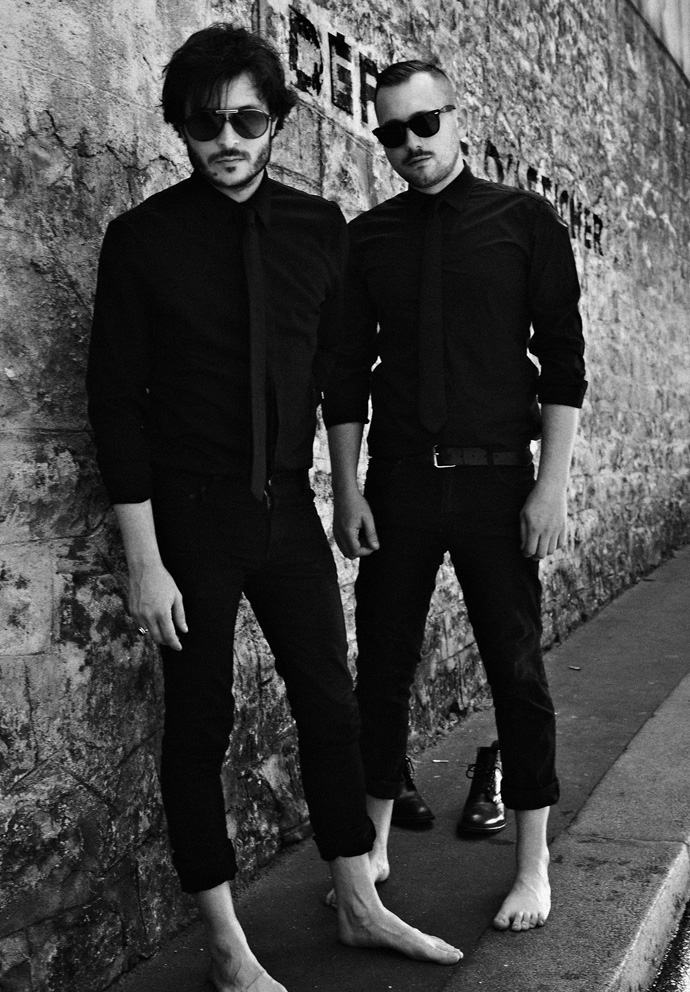 Benjamin (left) and Guillaume (right) of The Shoes, photo by René Habermacher.
Benjamin (left) and Guillaume (right) of The Shoes, photo by René Habermacher.You guys DJ’ed at the Hyères Fashion Festival, then at Versailles for the end of Couture Week, are you infiltrating fashion ?
It was a fun DJ set, a bit camping/bar mitzvah, but well mixed.
We also played in Florence for Pitti, in a beautiful place.
Are you continuing to do production for other artists?
Benjamin: It’s a part of our identity we started and really want to develop, so we try to keep it going, in between festivals, concerts and other requests that come in. We’re working on the WoodKid (Yoann Lemoine) album, a track with Philippe Katerine, very different things as long as we like the artist.
Guillaume: With Yoann it’s a bit different, as he’s also a friend.
How long has your album been out – you seem to have a lot of different videos already ?
B: The album came out in March, I think like Mylene Farmer we’re going to make a DVD with all the videos… (laughs)
G: We’ve done 4 videos already, preparing Time To Dance for the fall. In the end half of the album is going to have videos.
The Shoes ft Esser, STAY THE SAME. Directed by Daniel Wolfe.
Is Cliché one of the tracks for which you’ll make a video ?
G: a lot of people have asked, it’s a track that chicks like a lot because it’s the only feminine voice on the record, but it’s not in the plans right now, we think Time To Dance will work.
B: We’ve seen people go crazy on that track even though it hasn’t been played much. It has an old-school, Underworld-style crescendo that lasts 2 minutes.
I’ve seen you at the Nouveau Casino the first time around…do you manage to get some of the singers from the tracks to come sing from time to time ?
G: that was really at the beginning! We have Ben Esser who comes quite often, Anita from Cocknbullkid came at Nouveau Casino. But of course the audience likes to put a face on the song.
It’s a bit unusual to have the lyrics pre-recorded with live instruments, usually it’s the other way around — live lyrics with instruments playback. Especially because you guys really are hardcore on the instruments, while the voice seems to come from nowhere…
B: that was the main criticism aimed at us at the beginning, and we hadn’t solved it when you saw us.
G: we were a bit shy, now we sing it ourself, it’s not perfect but it works more with energy instead. Now we’re starting to more or less control the singing.
The Shoes performing WASTIN' TIME with Esser at Hyères 2011, with Stage of the Art.
Do you sing it entirely live now or do you mix with the recorded lyrics by the singer ?
B: you’re getting into our trade secrets… we mix the voices actually.
G: we don’t try to hide it. it was a problem at first, but now we’ve worked it out – though of course when someone like Esser comes along it’s great, it gives it more of a band feeling and we can concentrate on instruments.So how did you choose the singers and bands with which you collaborated ?
G: it happened by itself.
B: we were spending time in the UK, we met lots of people, making friends. It started with Primary One, we did the music for the track People Moving, he came to the studio in Rheims and we realized we could never have this kind of result with our own voices, so it became our first featuring. Then we contacted the people we had met with some demos, sometimes with lyrics sung in “yogurt”. No real name dropping.
G: none of the featurings are very famous people, it’s rather people who are at a similar stage of their career… since then we see a lot more Cocknbullkid and Esser.Singing in French, is that something you’d consider ? I imagine the collaboration with Katerine is in French ?
B: for The Shoes, no, but for other artists we do it.G: Benjamin does it more than me, but it’s not something for The Shoes yet.
The Shoes performing STAY THE SAME with Esser at Hyères 2011, with Stage of the Art.
What’s the current program, festivals ?
G: [this summer it was] festivals, the WoodKid album.
I’ve also produced the album of this artist called The Aikiu, which is a complete transfiguration of the initial project.
Is that the first real album by The Aikiu ? It seems it’s a project that has been on the verge of happening for a long time, I remember hearing a single at least 5 or 6 years ago…
G: They’ve had EP’s only so far, they asked us to come work on the album, we arrived and blew the whole thing upside down. We broke everything and started from scratch. I think Alex has a great voice, and that there’s great things to do with his voice — but that’s complete now and we’re working on WoodKid.
And working on WoodKid’s album brings some extraordinary conditions, we get to use unusual instruments. Yoann also puts a lot of constraints on us too, he knows what he doesn’t want, which pushes us to do things in different ways.
I was also very happy to discover that you (Guillaume) were behind Gucci Vump and the track SHA SHTIL which was THE track of the summer last year… Is that something you’ll continue or are you focussing exclusively on The Shoes ?
G: I’m focussing more on The Shoes, but Gucci Vump is a funny project, a bit shapeless, Louis (Brodinski) and I run into each other from time to time, we get commissions for remixes from time to time — like WoodKid’s Iron. It’s a dilettante project.
Gucci Vump – Sha! Shtil! by quepasooo
So after the festivals you guys are focussing on your own tour ?
G: Yes we have over 30 dates in the fall, the climax will be November 9th at La Cigale in Paris. We also hope to return to Japan.
You’ve already played in Japan ?
G: The album did really well over there, Japan’s the first country to sign us besides GUM, and they didn’t want to wait so long for the album, so we released an album just for Japan, with B-sides. People try to get their hands on that album, which is a bit of a collectors’ item, with demos and beta versions of tracks which later appear on CRACK MY BONES.
But we’re very focussed on our La Cigale date – with almost all the guests from the album, extra band members…
We usually have 2 percussionists, but we’ll probably go back to 4 – visually it’s beautiful and in terms of sound it doesn’t hurt. When you have 4 guys doing a sort of choreography, it gives something unusual.
The Shoes, photo by René Habermacher.
The last thing which stimulated you…
G: a DJ from a rap group called 1995, a French group, which made an amazing mixtape for the summer.
B: for me, it was the Solidays concert of Ebony Bones – I usually don’t listen to her music, but in concert it was impressive. It’s really made for a festival.
G: from time to time, you get groups that you don’t necessarily like that make a strong impression on you live, they transfigure their music. But you also get the opposite…
I had that with Gonzales. 10 years ago I liked his stuff, I went to see him live, and I hated it so much, I couldn’t listen to the music again for several years. And still now I like the music but I can’t stand his videos or his imagery in general.
G: it was really important for us to delegate the image to Pierre (LeNy), even if we have our ideas regarding what we like visually.
So far you haven’t appeared in any of your videos….but you’re not hiding either ?
G: You often see beautiful videos that fail as soon as the singer appears, the acting required from the singer brings the whole thing down. We want our films to be little bits of cinema – we’re not going to add anything to that feeling.
THE SHOES
Special concert at LA CIGALE
November 9th 2011
Opening act: ESSERPhoto credits:
STYLING: Michael Philouze
GROOMING: Tanya K @ B-AGENCY
PHOTO ASSISTANT: Fabien Campoverde
with special thanks to Pierre Le Ny & G.U.M.Film credits:
Filmed by Jason Last & René Habermacher
Edited by Antoine Asseraf
Production Assistant Lynsey Peisinger
a THE STIMULEYE production -

THE BERG SANS NIPPLE
-‘Build With Erosion’, doesn’t pertain to any set form or principle. It’s a challenge: a deeply experimental and infectious third album from The Berg Sans Nipple, combining devastating melodies and a mind bending rhythm section informed by disciplines as diverse as gamelan, dancehall and DC Hardcore. THE BERG SANS NIPPLE is Lori Sean Berg and Shane Aspegren.
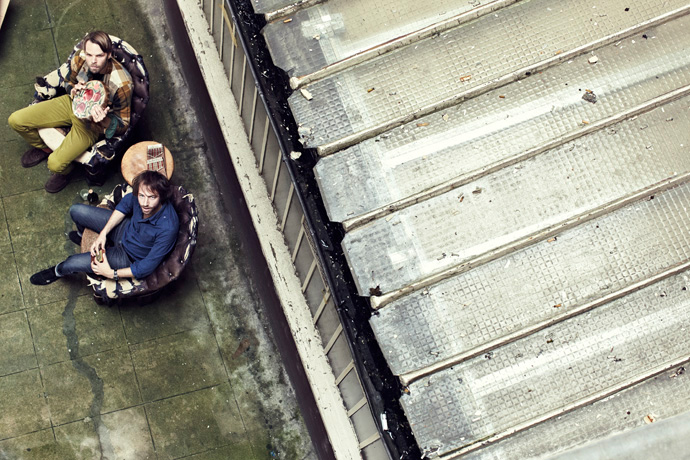 Lori Sean Berg and Shane Aspegren jamming on a cloudy day in Paris. Photo by René Habermacher
Lori Sean Berg and Shane Aspegren jamming on a cloudy day in Paris. Photo by René HabermacherWhat was the last thing that inspired you?
S: That’s a hard one to answer. As time goes on, it’s a lot harder to be really be blown away by things. We just did the project with Le Musee Du Quai Branly in Paris and had the chance to dig through their audio archive. This was really refreshing to work on to discover new sounds from around the world. Also, Lori and I saw the Anish Kapoor installation at Le Grand Palais together and that was really amazing. It was something that you needed to spend some time inside to appreciate the full effect. I suppose we like things without immediate gratification.
Can you remember a particular inspiration for your latest album BUILD WITH EROSION?
S: The record was created over such a long period of time that there were so many things that were poured into it. In the end, the theme of erosion was really important.
L: We use a lot of eroded musical equipment. I’m not sure how to say it? We love dust!
S: In a way it’s always been a theme of the band… using instruments that are on their way out, or loving the sounds that came from pedals with dying batteries…
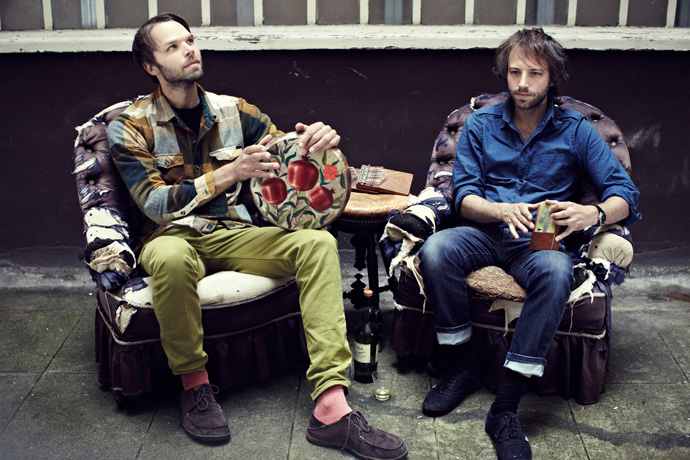 THE BERG SANS NIPPLE in action. Photo by René Habermacher
THE BERG SANS NIPPLE in action. Photo by René HabermacherIs the concept of “erosion of instruments” something that interests you conceptually or is it the frailty of sounds created?
S: I guess it’s both of those things. There’s always been a balance of harshness and beautiful sounds in there. Also, lyrically, it all ties in together, but that’s all there for people to digest as they’d like.
L: I love instruments on their last legs. I want to give them a second life
Tell us a little more about why you work with concepts. In advance of the album release, you set up a site for BUILD WITH EROSION incorporating the surrealist concept of the exquisite corpse. You used this concept again for the promotional video for Change the Shape. Why?
The Berg Sans Nipple – Change The Shape from Clapping Music on Vimeo.
S: A band that I was part of back in the late 90’s used to make exquisite corpses in the van on tour and, at that time, I was really into the Surrealists. I’ve always wanted to do a project like that and it worked really well with the “Change the Shape” theme. It also gives a different energy to a project when you can get a bunch of other artists involved.
L: Although “Build with erosion” is not a “conceptual” album…
S: Maybe not conceptual in the sense of advance planning but, in the end, it developed into a unified concept. Things become what they are and it all makes sense together.
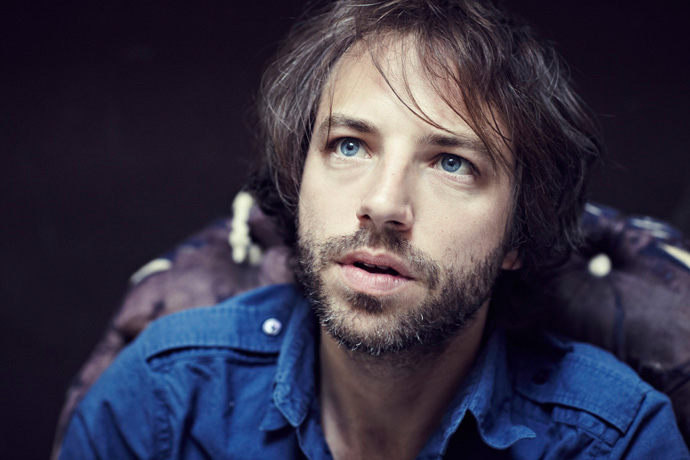 Lori Sean Berg of THE BERG SANS NIPPLE
Lori Sean Berg of THE BERG SANS NIPPLEOne of my favourite tracks on the album is DEAD DINOSAURS RULE THE EARTH. How did that track develop?
Dead Dinosaurs Rule The Earth – The Berg Sans Nipple by blackmaps
L: From Zari!
S: Of course, the title came from my daughter and I jotted it down in a notebook. We had a bass line and drumbeat in a tape full of improvs that we had done together and I thought that the title was perfect for the bass line. As always, it went through a lot of transformation to get to the end of that track, but it all stemmed from a child’s mouth and an improv.
L: An old old idea. Probably recorded from my minidisc.
S: Yep, that wasn’t one that we created from opposite sides of the world. Apart from the lyrics, it was worked on in an old fashion style, when we were together. I think even all of the kalimba lines were from that minidisc!
Lori, you live in France and Shane, you live in Nebraska. Do you work together while living apart by exchanging ideas or do you tend to do most of the work in the concentrated periods when you are actually together?
L: We really need to be together for “the moment “. But maybe we could do a conceptual album through skype next time?
S: It’s really combination of the two. The best stuff comes out in the concentrated periods of being together though. The brooding and frustration comes at the other points, but then gets weeded out when we meet up again.
L: That sounds agonizing. But when were together we have a lot of fun, we play pinball and drink wine and champagne.
S: visit caves…
L: and meet cavemen…
S: Cro-mags from the perigord noir!
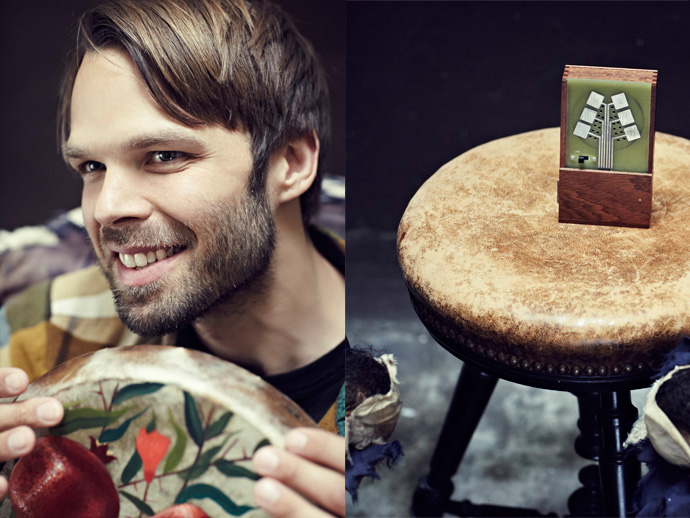 Shane Aspegren has a fable for unusual soundtools..
Shane Aspegren has a fable for unusual soundtools..The Berg Sans Nipple is known for its amazing live shows. How do the two of you go out there and recreate the complexities of your sound?
S: We started as a live band. In fact the first few shows we did, we never repeated any of the music that we made, but were really just writing a set of music to perform live. Now thing are a lot more complicated in that we’re writing in the studio and then trying to figure out how to transform that into a two person live setting. I love both sides, but it’s become more challenging as things have evolved.
L: It’s always a “casse-tête chinois” when we play shows! I think it would be much easier for us to simply work in the studio. But it’s important for us to play live music… to be connected with people.
S: We’ve always tried to make a connection between each other, even through sampling each other live and setting up face-to-face. I think that was our first goal in playing with each other. So the idea was the inception of the band. And hopefully that’s how we connect with our crowd.
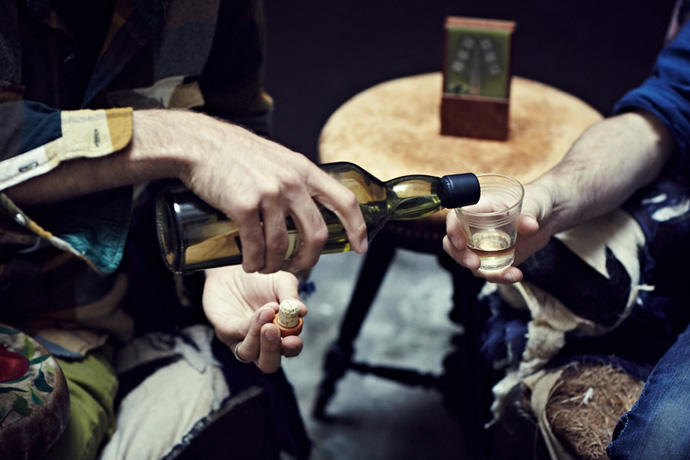 ...and malt brew
...and malt brewYou both work outside the band, including work in film and photography. Do you have any favourite photographers or visual artists?
S: I have a hard time pinpointing favourites of anything. I was really into Robert Frank and Duane Michaels and photographers like that when I first started taking photos, but there’s a lot to love about so many things. I like colour a lot more now. But speaking of visual artists, we’re really lucky to have been working with Cody Hudson and Stephen Eichhorn (who were responsible for the artwork for “Build with Erosion”).
If THE BERG SANS NIPPLE could work with anyone who would it be?
L: Johnny Cash.
S: That’s interesting. I feel like it’s always the thing that’s the most exotic that interests both of us, which is maybe why the trans-atlantic game works for us. I’d probably say that scoring something with Ennio Morricone or maybe even moreso, Bernard Herrmann. It wouldn’t necessarily be a film though… maybe something in a public setting. Or we could score Johnny Cash’s life.
In what direction do you see THE BERG SANS NIPPLE developing into in the future?
L: Pinball sound design. That is the future for me!
S: If Lori is going to go off on his own to get lost in pinball world, then I guess that it’s, the end! We’re trying not to focus too much on the future but to work on the present as much as possible. We’re starting to do a lot more film work together and that’s what we’re really interested in. I don’t see us ever stopping making music together, but we’re also ready for another step into other things. We’ve got another project in the works as well… a new record with a different concept that won’t necessarily be the BSN, but will still be in the same spirit.
-

SIREN SUZANNE von AICHINGER
-Suzanne von Aichinger is a modern archetype of the Parisian muse, in spite of the fact that she was born in Germany, and grew up in Canada.
She was discovered by the legendary illustrator Antonio Lopez, whom she considers to be one of the great influences in her life, as well as a very close friend. She inspired and collaborated closely in the design studios, with Christian Lacroix, John Galliano and Jean Paul Gaultier. Suzanne von Aichinger posed for iconic photographers Serge Lutens, Paolo Roversi, Mario Testino, Jean Loup Sieff, Ali Madhavi, David Seidner, and strutted down the catwalks of Yves St Laurent, Thierry Mugler, Claude Montana, Gianni Versace, Christian Dior (Galliano) , Hermes, Martin Margiela, John Galliano, Jean Paul Gaultier.
In Greek mythology, the Sirens with the irresistible charm of their song, lured mariners to their destruction on the rocks surrounding their island..
In modern mythology, Sirens are dressed in Rick Owens, pose for photographer René Habermacher and share their secrets and thoughts on current and past affairs with Stimuleye Filep Motwary…
SUZANNE VON AICHINGER feature, is a collaboration between Un nouVeau iDEAL and THE STIMULEYE Fashion Editor : Ines Fendri ⎜ Make Up : Akiko Sakamoto ⎜ Hair : Karin Bigler Production : Lynsey Peisinger for THE STIMULEYE Special Thanks to Mr Rick Owens and Anne van den Bosche @ Rick Owens Press Office
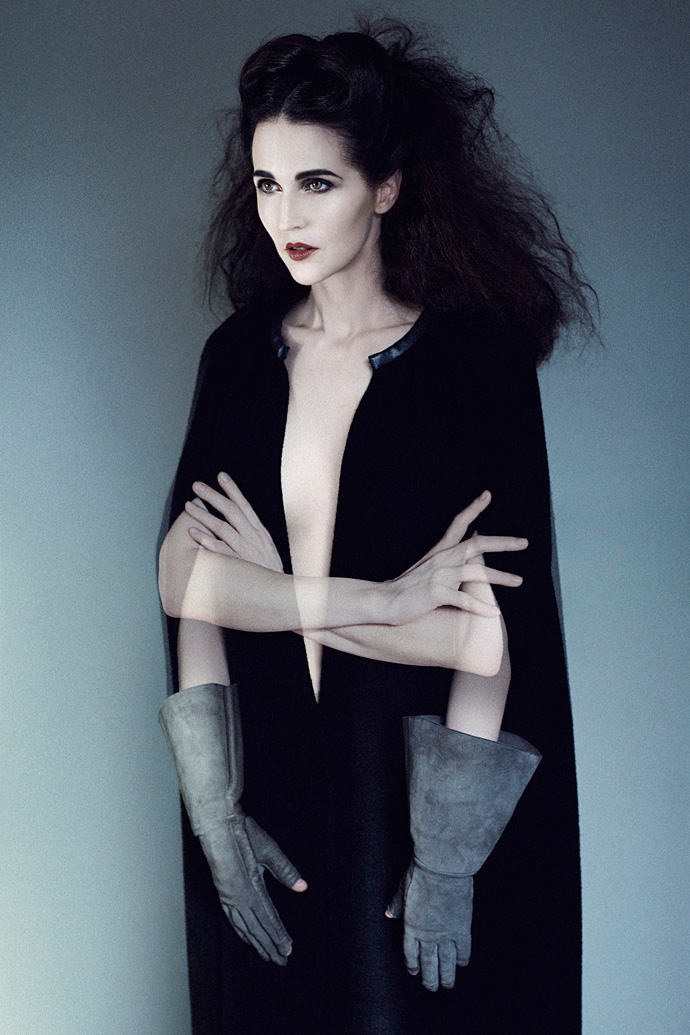 KALI, Suzanne von Aichinger wears a Rick Owens cape and gloves, all FW2011. Photography by René Habermacher
KALI, Suzanne von Aichinger wears a Rick Owens cape and gloves, all FW2011. Photography by René HabermacherI always liked her and when we finally became friends, I liked her even more. In the following conversation Suzanne shares her thoughts on fashion, music, talent, the water, mythology and other obscurities. You are about to discover the muse, the model, the artist, the stylist..
I caught her leg on her daybreak between styling for a Vogue photo shoot and organizing a major project.
FILEP MOTWARY: Hi beautiful? So it was very difficult to catch you in the past two months. What have you been up to?
SUZANNE von AICHINGER: I know Filep. I’ve been a little like Houdini…escaping. But for a good reason. I had plenty of work and styling projects
Tell me more about it please. It seems you work non-stop.
It’s been good for me lately. I’ve been styling some perfume campaigns, editorials for Russian Vogue, Italian Vanity Fair, doing photos with Dita, and now I’m preparing another perfume campaign, and a major photo shoot with one of the MOST gorgeous women on the planet.
Oh Gosh, indeed its a lot. You mean the actress, Elisa Sednaoui? Ali posted a shot of her on twitter…
Oh what a beauty Elisa is!!! But, I’m referring to another lady…very iconic. I don’t know if I should say who it is. I don’t like to talk about things before they come out…
I understand. How easy it is for you to collaborate with people. What a concept needs to have in order to get you involved in it?
Collaborating with people is my ultimate way of creating. I find the dynamic of working with another or others, stimulating, and proven a successful way of expression for me.
How do you make your choices? Is money an important motive or not always?
There has to be an element that compels me, something that excites my imagination. I also have to feel that I have something relevant to bring to the story. Money is very often not a motive. But, sometimes it is an essential part of creation. We must also live, make a living, etc. You have to know when to give and when to sell!! There is no shame in being paid for a job well done. Andy Warhol considered making money the highest art form. I’m not sure that I adhere to this philosophy, but I don’t love being broke either. I like the freedom that having some cash on hand can procure you.
On the other hand there might be talented people, who would love your contribution but, lets say, cannot afford you. How would you react in such conditions?
I usually say YES to a project, which stimulates me. It’s not about the $$$. It’s about the action. I believe in working with people that I consider talented or kindred spirits. As people of great talent have wanted to work with me, when I had no money to pay them. Just for the sheer joy of seeing an idea become a reality.
I wanted to ask you about the photo shoot you just did with René Habermacher. It’s so iconic, yet in a very special way. How was working with René?
I loved it. We had a beautiful day together, with a great creative team. We wanted to express in this series, something that is based more on personality, than fashion. I feel that there are many stories to be told in my future with René. There is a quality in his vision that is very strong and appealing.
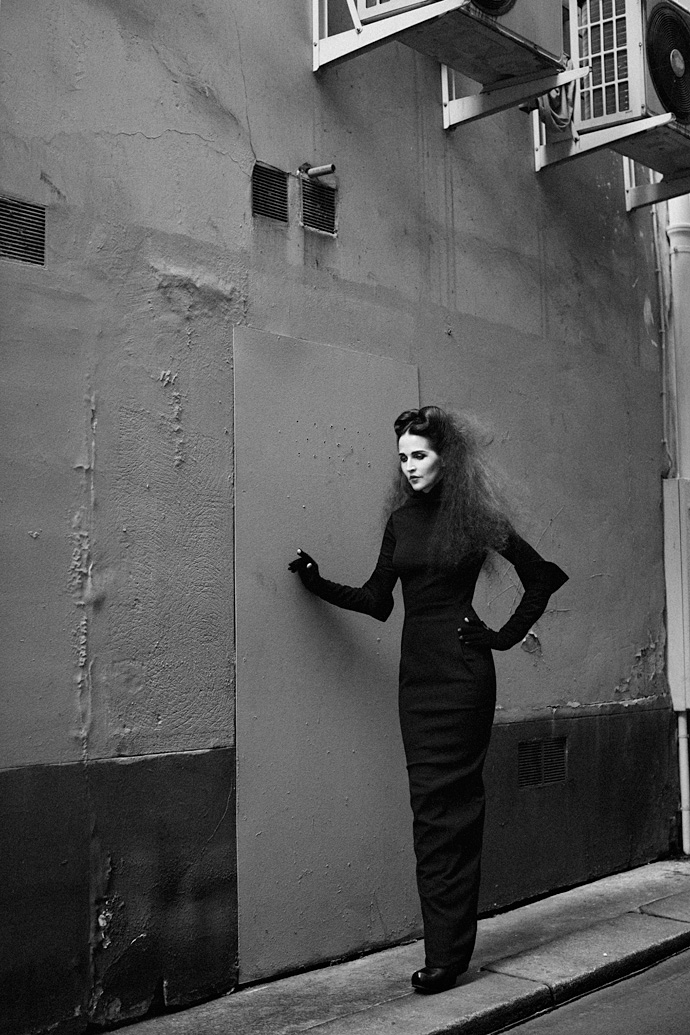 CASSANDRA, Suzanne von Aichinger wears a Rick Owens dress, boots and gloves, all FW2011.
Photography by René Habermacher
CASSANDRA, Suzanne von Aichinger wears a Rick Owens dress, boots and gloves, all FW2011.
Photography by René HabermacherExactly my point. The photographs serve our conversation so right! I’m very happy that Rick Owens was so positive when I contacted him for the garments. He is always so nice to me. Also for the fact that we shot his winter collection which is by far my favorite!
So am I! I LOVE Rick! He is one of my favorites. And, his fashion is timeless. I know that this can sound cliché, but if you have some pieces by Rick from 12 years ago, they are as relevant as pieces that he has made 2 days ago. They don’t go in and out of fashion. They have their own essence and place.
Having in mind that Rick’s clothes are so special, yet the 2000’s are the epitome of diversity. Each designer points out a different outline every season, there is so much choice. How do you see fashion now yourself, as a stylist?
It’s hard for me to answer this. I see many great things happening, no doubt. But, I see a lot of nonsense going on as well. There is not enough power any more in the hands of the creators. Now, big design houses change designers like they change their underwear. Just ridiculous. There is no time for the designer in place to create a brand identity, that he is fired. And very often, they find out that they’ve been fired, by reading about it in the papers.
It’s as if the financial/commercial people at the heads of some houses, envied the position of creator, and wished to usurp it. They believe that they are capable of being the creator. WRONG!!!!
(more…) -

TOO FUNKY to last: the mini decade
-The other day, Stimuleye Erotokritos Antoniadis swung by with a little treasure: when working as a stagiaire at Thierry Mugler, he was asked to snap some backstage pictures of George Michael’s TOO FUNKY video shoot.
And here they were – George, Thierry, the Lindas and Naomis, Shana, Eva, Rossy de Palma, Ivana Trump, Diane Brill, Lypsinka, Jeff Stryker and so on.
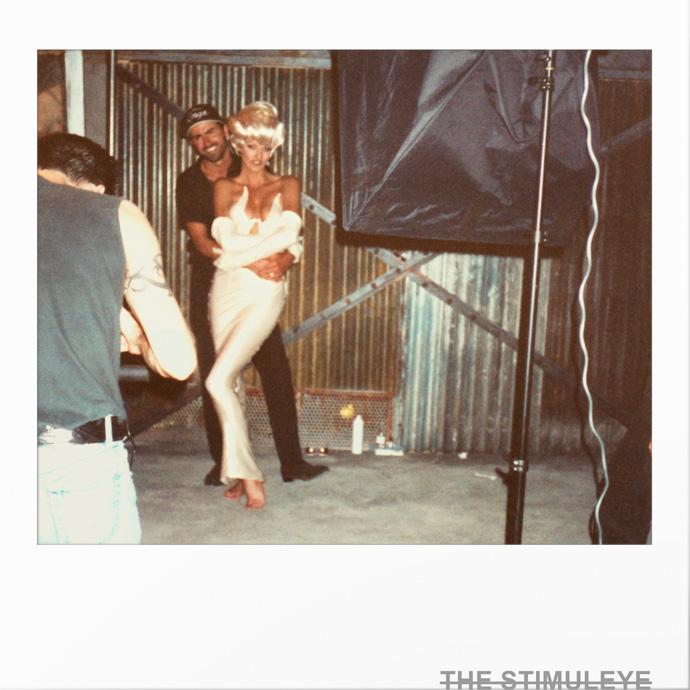 George Michael and Linda Evangelista on set of TOO FUNKY posing for the official picture. Photo by Erotokritos
George Michael and Linda Evangelista on set of TOO FUNKY posing for the official picture. Photo by ErotokritosThe song features a sample from The Graduate; Anne Bancroft’s line of “Would you like me to seduce you? Is that what you’re trying to tell me?” – and YES we were, then and now, instantly!
When this video was released in 1992, it was both the epitome of a glamorous era stretching from 1988 to 1992,
and a marker for the end of said era.An era that was no longer 80’s and yet not fully 90’s. What to call it ?
“80’s and a half” ? that would suggest that this era was an extension of the 80’s, when in fact it was more of a break…
We settled for the “Mini Decade,” a 4-year period with visual, musical and cultural codes so unique that they deserved a decade of their own.
As a teaser for our Mini-Decade series, here is a teaser, pictures which have been sitting in a box, unseen, for over 2 decades…
Stay tuned for more.
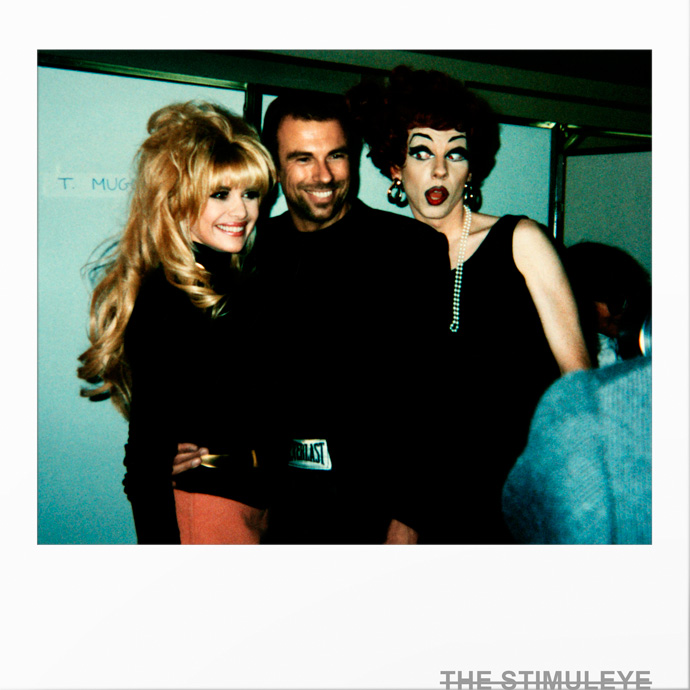
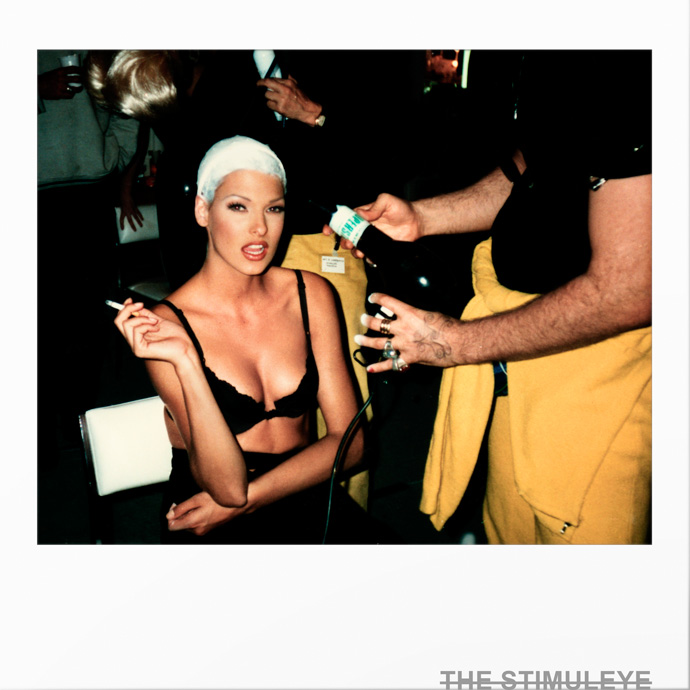 Left: Ivana Trump, Thierry Mugler and Lypsinka stand in for another snap
Right: Linda Evangelista, always ready for her 'look'. Photos by Erotokritos
Left: Ivana Trump, Thierry Mugler and Lypsinka stand in for another snap
Right: Linda Evangelista, always ready for her 'look'. Photos by Erotokritos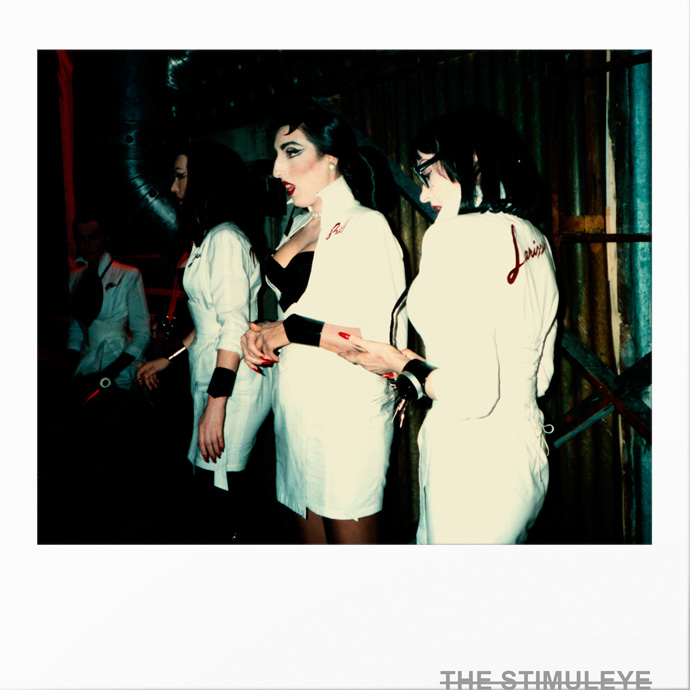
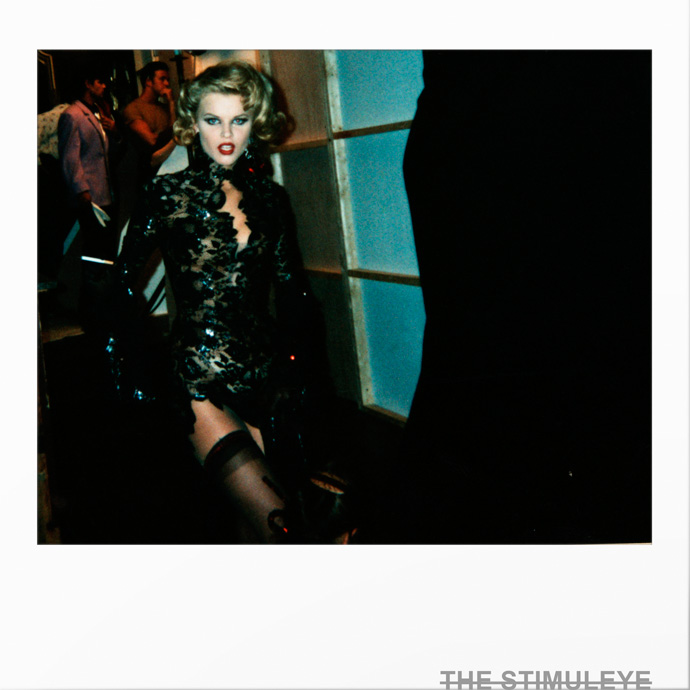 Left: Fierce Trio with Rossy de Palma, and Right: the very young Eva Herzigova. Photos by Erotokritos
Left: Fierce Trio with Rossy de Palma, and Right: the very young Eva Herzigova. Photos by Erotokritos -

YOANN LEMOINE: WOODKID WUNDERKIND
-Epic music, grandiose effects, Agyness Deyn and other supermodels in battlegear — Woodkid’s IRON music video seems at once surprising and classic in the way it mixes imagery and music. That’s probably because Woodkid is none other than Yoann Lemoine, a twentysomething, multi-awarded illustrator-turned-director.
He’s already worked with the likes of Richie Havens, Yelle, Katy Perry, Moby and Taylor Swift, done short films for kids, and been rewarded for a film about a dick graffiti… And now he’s releasing his first EP, IRON.
IRON EP cover, illustration by Stephan Balleux.
ANTOINE ASSERAF: The music video for IRON – is it strange to make a music video for yourself ?
YOANN LEMOINE aka WOODKID: Not that strange, because as soon as I started the WOODKID project, I knew I wanted to make images, so it made sense with the video, and it was the first time I could make a movie and control all the parameters, with a budget and without at the same time being told what I could and couldn’t do. Being both the client and the director was a crazy opportunity, so I’m super happy with the result.
To direct and to make music is a bit similar, emotionally you are touching the same sensible points, it’s just a different medium of expression.
You have a material theme going on – you are the WOOD kid, the single is IRON, the tentative album name wood and CRYSTAL…
The project is always evolving, but I really like attention to textures, I made a film once on the texture of rocks, in IRON there is a lot of marble, black smoke. I love looking at textures and the emotions they create. The color, the complexity, what they evoke, mystical and dark things.
So did the song or the visual come first ?
I’ve had an image in my head for this project for a long time, I wanted to make a statement about heroic fantasy, not in a kitschy, elf and trolls way, but to explore what Tolkien, Final Fantasy, and Matthew Barney did. How you create a world with social codes, in a documentary sort of way, with specific imagery, dogmas, political parties, currency, dresscodes, ethnic groups, races, geography… How you recreate these codes in a parallel world. And how to do this in a way that is less cheesy than we are used to seeing in heroic fantasy, more intellectual…
IRON music video, directed and sung by Yoann Lemoine.
You once said on Facebook (laughs) that you were afraid that one day you would have to make a choice between music and directing, do you still believe in that ?
If I have to choose, it will be a matter of scheduling.
So a temporary choice ?
Temporary but… you never know how things evolve.
I come from illustration, and a series of circumstances led me to move to directing without ever deciding “I’m quitting illustration”, but I never came back to it… I just never had the occasion to do it again, a road built itself in another direction.
How did you make the transition between illustration and film direction ?
First it was animation films for kids, because I come from 3D, then I felt the need to make live films, with actor direction, a quality of photography, so I bought myself a camera and started making my own films. Then it turned into commissions, and I transmitted into real shooting my desire to compose images and artistically direct scenes….
At first jobs were appealing to your 3D and special fx know-how, but now on the Taylor Swift video you had no post-production special effects…
It’s all experimenting. What I’m trying to do in my career and in my artistic development is to reconcile a beautiful image, detailed and in good taste, with fashion references, in the air of the times, that people want to see, with a type of narration usually seen in Hollywood films. Postproduction effects, a bit WOW, symbolic narratives with visual trips… It’s part of my identity.
But I’m no Gondry either.
Yoann Lemoine in Erotokritos FW 2011. Photo by René Habermacher.
-

YELLE | 2 | the next level
-Our discussion with Julie, Jean-François and Tanguy, moves to touring — an essential element to the success of YELLE — and the need for a record label in 2011…
Yelle in Marios Schwab FW 2011. By René Habermacher, styling Ines Fendri, make-up by Akiko Sakamoto.
When you play live, do you try to add other things visually, like with the Katy Perry tour for which you’re opening ?
JEAN-FRANÇOIS: Well as opening act we have actually less means on the Katy Perry tour!
JULIE: Normally we’re 6 on tour, with the sounds, the lights, the stage, but on Katy Perry we’re just 4.
Also we don’t give our whole show away, it’s more of a teaser — anyway we know Katy Perry is following up with 4 trucks so there’s no use trying!JEAN-FRANÇOIS:: We want to make our show stronger, so we have these suspended drums which are very visual, the logo, which is new – an inverted Peace sign. We like bringing in new elements, whether they cost 20 euros or 2000, but we’re not in a fantasy of something crazy. However from the beginning we’ve wanted to make one-off shows, like with a choir, big ensembles…
You were also mentioning new lights for your tour ?
JEAN-FRANÇOIS: We found this guy for lights, we were looking for a long time for someone who would bring something to our live performances,
someone who’s creative on his own but open to our ideas…TANGUY: We need that extra, because we’re coming a second time around but without huge means, we want to make a show with songs we’re proud of — lighting is really the little ‘plus’ that we can bring.
So would you want to make a “live” music video to show people who don’t know how you perform ?
TANGUY: We thought about it at the end of the last tour, with all that footage [shot by “Ce Jeu” director Yoann Lemoine],
JEAN-FRANÇOIS: We just haven’t been able to edit it yet… we could have done as a single, but not for the first single of the album — but we’ll do it eventually.
"Ce Jeu" music video by Yoann Lemoine. Photo by Antoine Asseraf.
I still have a hard drive somewhere saying YELLE with all your tour footage, I was asked to help edit it “when I had time”, I was really into it but documentary editing takes so. much. time.
JULIE: And you can’t do just one hour per day, you need to really get into it…JEAN-FRANÇOIS: Even us, we don’t even feel like going back in there right away, you kind of need to put those images aside and let them rest, but we would like them to show them at some point.
It looked like an amazing experience.
JEAN-FRANÇOIS: There were some beautiful images…Trailer for the 2008 Yelle world tour, by Yoann Lemoine.
What’s your idea of the role of the record label, since you started without one and were without one for this album, you also released things without a label in between albums…
JULIE: We learned a lot from the time we had at Source, good things, bad things, some things we didn’t want to do the same way again, it was evident for us that we had to make our own structure, to get even more freedom.JEAN-FRANÇOIS: To sum things up, on the first album we had ideas but not the means, now we have both!
For the first album you worked with Pierre LeNy, acting as an artistic director of sorts…
JEAN-FRANÇOIS: Yes Pierre brought a lot of ideas, a lot of contacts, a network, in fashion, which made it a lot of easier, now we’re the art directors, it’s the next level.Second music video for "Je Veux Te Voir".
How was that experience of remaking the video for JE VEUX TE VOIR – doesn’t it feel strange ?
JEAN-FRANÇOIS: That was a flashback [a lot of time had passed since the original release of JE VEUX TE VOIR]. First of all we hate the first music video for JE VEUX TE VOIR, we hated it as soon as we made it.
But you’re not always in a position to say no to a label who’s invested, we still hate the fact that it has so many million views!!The new video was made with Nicolas Benamou following the experience with Michael Youn, it’s the work of a label, who feels there’s a second life to give to a single,
it was so strange for YELLE, when they first brought the single to radios, they didn’t know what to make of it, but once they had gotten used to it it was ok… it’s really the work of the record label.So are you at ease with that freedom ? Talking to Roísín Murphy who has done many things herself over the years in terms of styling and ideas for music videos, she was still happy to have worked with an art director on OVERPOWERED, to sharpen the image.
JEFF: We’ve never felt forced, we’ve never had the record label pressuring us, at first we were a bit naive, everyone’s nice, we were just happy to do things, and except for that first video we enjoyed everything we did.We’ve always been masters of our image, but of course somethings get out of hand, get bigger than you expect them, doing things by ourselves is exciting, it makes us feel more responsible. the DIY style is very stimulating, you want to defend your project even more because all the choices are yours.
Of course it becomes 100% of your life! So when you say “I’m going to relax, i’m going to the beach” you’re not really relaxing because you’re thinking about what you could do. But that’s the case with everyone who’s a freelance or has their own company, it’s an obsession!
Work becomes a luxury.
It’s not work, it’s not labor, it’s energy! -

YELLE | 1 | le fun & l’élégance.
-YELLE — Julie, Jean-François and Tanguy — burst onto the music scene in 2006 with their UFO bubble-gum-techno-rap “Je Veux Te Voir”. Since then they’ve collaborated with the likes of Katy Perry, Crookers and Robyn, and seduced audiences all over the world. They’re basically the first French-singing band to achieve international success since the Rita Mitsoukos. Now they return with their second album, SAFARI DISCO CLUB.
For this 3 part interview, René Habermacher shot Julie exclusively for THE STIMULEYE wearing the new MARIOS SCHWAB Fall/Winter 2011 collection. Styled by Ines Fendri, Make-Up by Akiko Sakamoto.
Yelle in Marios Schwab FW 2011. By René Habermacher, styling Ines Fendri, make-up by Akiko Sakamoto.
ANTOINE ASSERAF: Let’s talk about your new album first, SAFARI DISCO CLUB, there’s an immediate visual concept from the name to the album and on to the double music video…
JEAN-FRANÇOIS aka “GrandMarnier”: Actually it’s something that was not there to start with but added at the end. We found the name SAFARI DISCO CLUB very late into the process, at the last minute almost. We thought we should keep things simple, find 2 tracks from the album to start with.
The most inspiring track in terms of visual adaptation was SAFARI DISCO CLUB. This double-theme made us naturally think of Jean-Paul Lespagnard [whose styles had inspired the CE JEU video] and his penchant for double-themes, for juxtapositions. So we discussed it with him, with some references such as the final scene of Luc Besson’s SUBWAY, in explorer mode.
The only thing I remember about this film is Isabelle Adjani’s punk “fuck you” dinner scene…
JEAN-FRANÇOIS: It turns out that Julie’s hair in the video is not far from Isabelle Adjani’s, but that’s pure coincidence…
But the explorer look, that was something stuck in my head — it’s a bit why I started to get into music: I was such a big fan of Jean Reno playing the drums in the subway as a kid, it left an impression on me. So this final scene where they play music dressed like explorers was the starting points for Jean-Paul to work from…
So, do you feel that this SAFARI DISCO name applies to the album as a whole ?
JEAN-FRANÇOIS: It definitely gives a tinge — from the moment we had the title, we listened to the tracks differently, you hear the percussions more. The word “safari” also brings the meaning of “discovery,” which works because we had applied ourselves to making all the songs very distinct. We feel very much part of the compilation generation!
It all works out in the end, but once again it wasn’t thought out that way, we made the songs really one by one.
Safari Disco Club album cover by Grégoire Alexandre. Styling by Jean-Paul Lespagnard.
There are some African vibes in the title track and on LA MUSIQUE…
JEAN-FRANÇOIS: There is a percussion side, coming from the live… Julie has a Tom Bass, we have these suspended drums, we really base ourselves on the percussions for the live show, constructed a bit like a DJ set, with transitions — that really rubbed off on the way we composed for this album.
TANGUY “TEPR”: We didn’t want to copy anything, it’s just a slight tinge, nothing too ‘in your face’…
JEAN-FRANÇOIS: On SDC itself, the most obvious thing in terms of inspiration is the guitar gimmick which is almost Zouk.
Both LA MUSIQUE and SAFARI DISCO CLUB are very instrumental tracks, very percussion-driven, you’re in a sonic trip with words just guiding you on your way…
JEAN-FRANÇOIS: It’s less constructed.
JULIE: Less of a traditional song format.
JEAN-FRANÇOIS: The voice is used more like an instrument, on POP-UP it was more spoken.
TANGUY: Julie’s way of singing changed, not in a calculated way but gradually while writing — it was very spoken and broken on POP UP, on SAFARI DISCO you find this style only on one track really: COMME UN ENFANT. We wanted to try new things.
(more…)
